Aeonium are a beautiful and low-maintenance addition to any garden or home. These colorful plants are native to the Canary Islands and are known for their striking rosette shapes and vibrant hues. In this guide, we will cover everything you need to know about growing and caring for Aeonium succulents, including tips on watering, sunlight, and propagation.
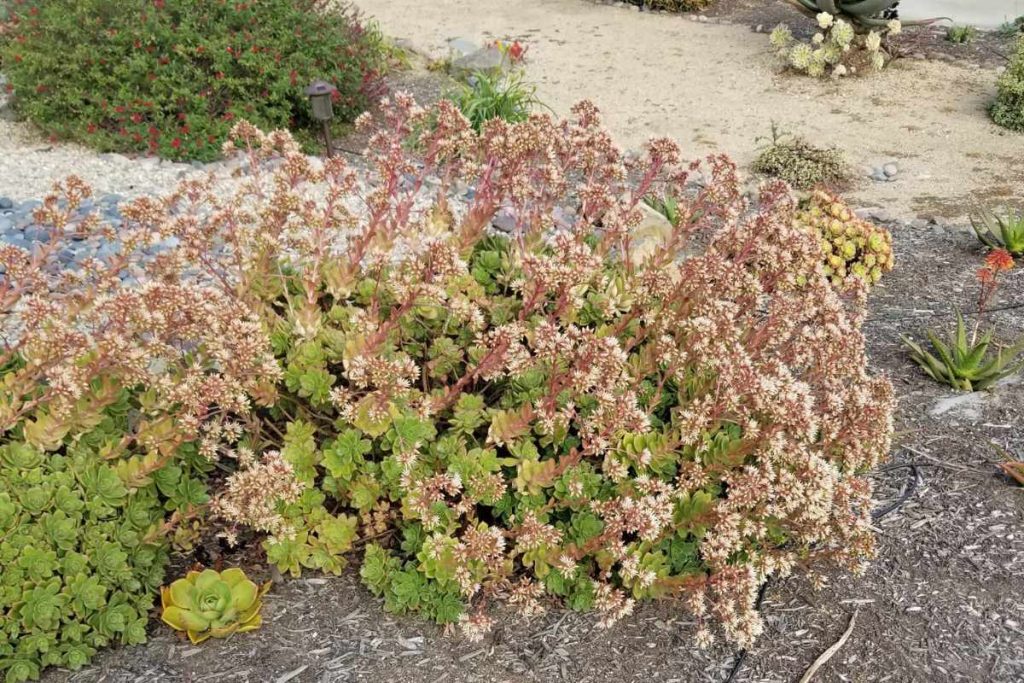
Dig in!
What is an Aeonium?
Aeonium is a genus of succulents that belongs to the family Crassulaceae. There are over 35 species, ranging in size, shape, and color. They are typically small to medium in size, with rosette shapes and bright green, purple, or red foliage. Some species of Aeonium can even have variegated or striped leaves.
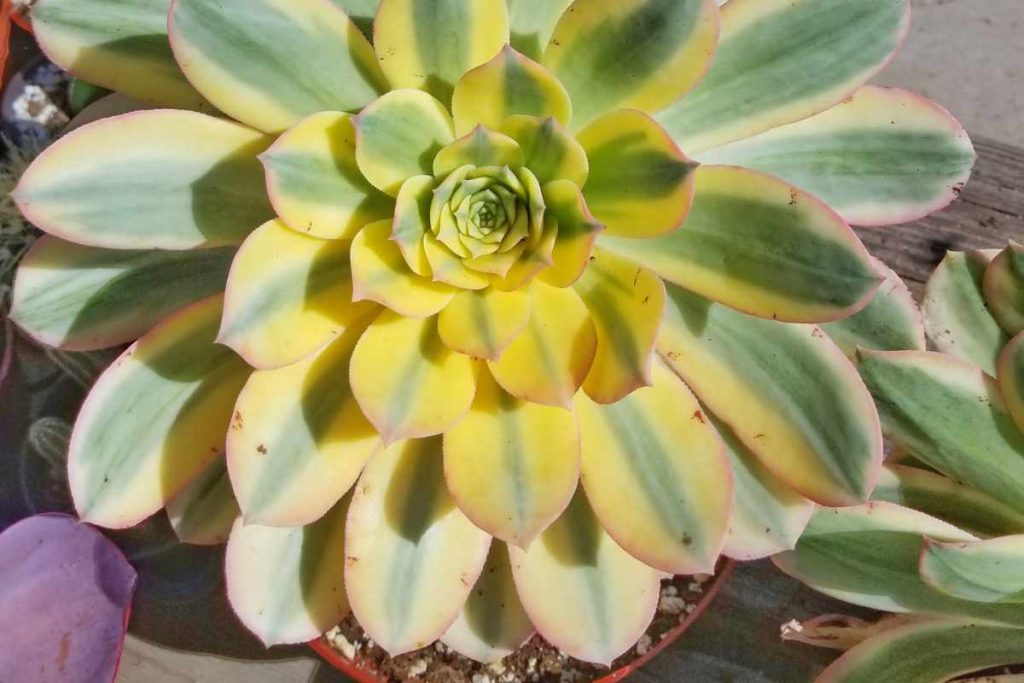
Aeonium are perfect for gardeners with busy schedules or those who live in hot, dry climates. They are drought-tolerant and can survive long periods without water, making them a low-maintenance choice for indoor or outdoor gardens.
How to Grow Aeonium Succulents:
Aeonium plants are easy to grow and thrive in well-draining soil, full sun to partial shade, and moderate temperatures. Here are some tips for growing these beautiful succulents:
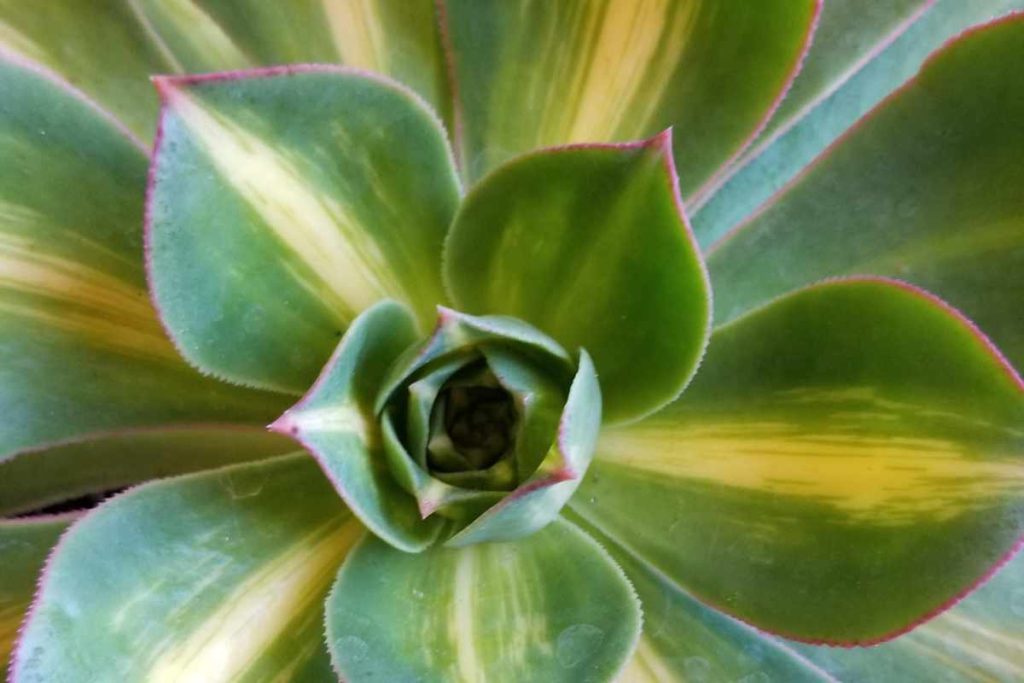
Soil
Plant Aeonium in a pot with drainage holes and use a well-draining soil mix, such as cactus soil or a mixture of potting soil and perlite or sand.
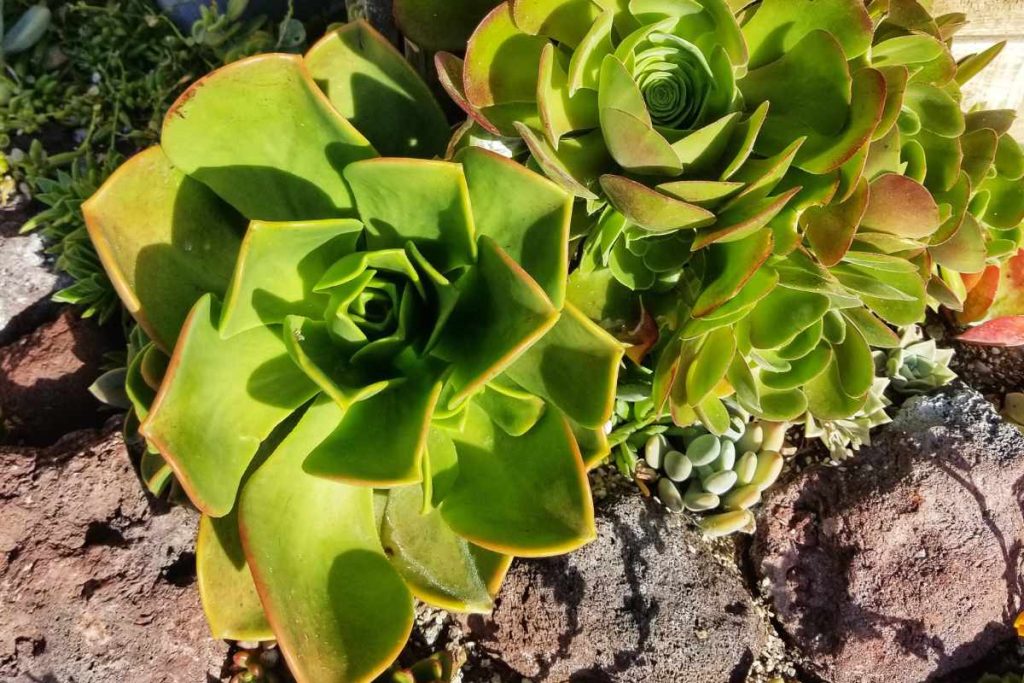
Light
Place the pot in a sunny location, such as a windowsill or outdoor patio. These succulents prefer full sun to partial shade and will tolerate some direct sun, but avoid placing them in hot, direct sunlight for extended periods as this can scorch the leaves.
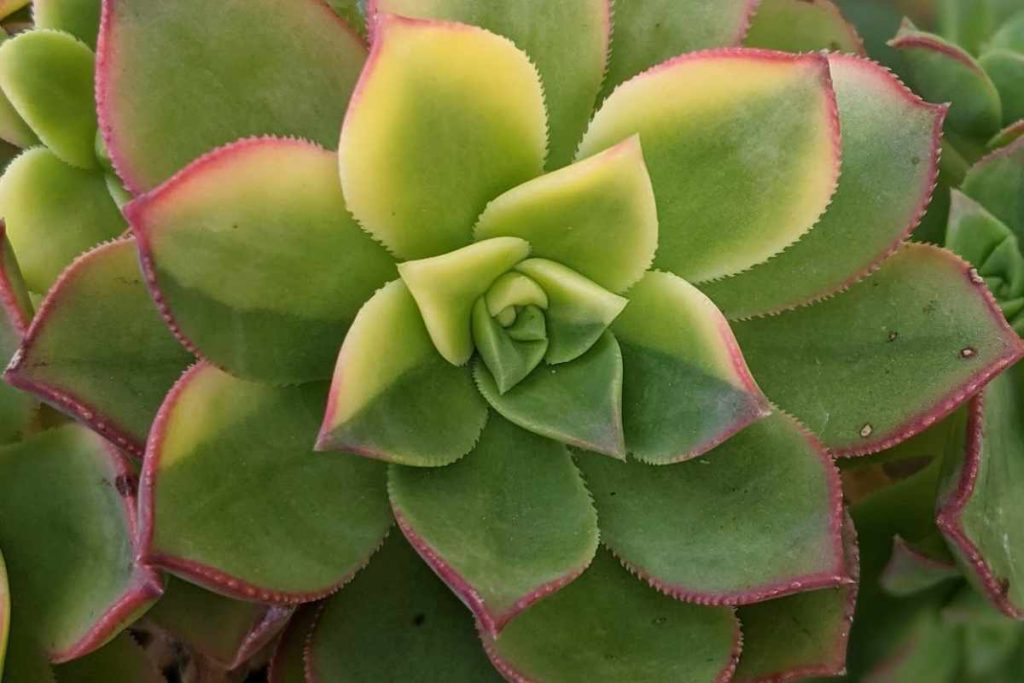
Water
Water Aeonium plants sparingly, allowing the soil to dry out completely between waterings. Overwatering can lead to root rot, so be sure to check the soil moisture level before watering.
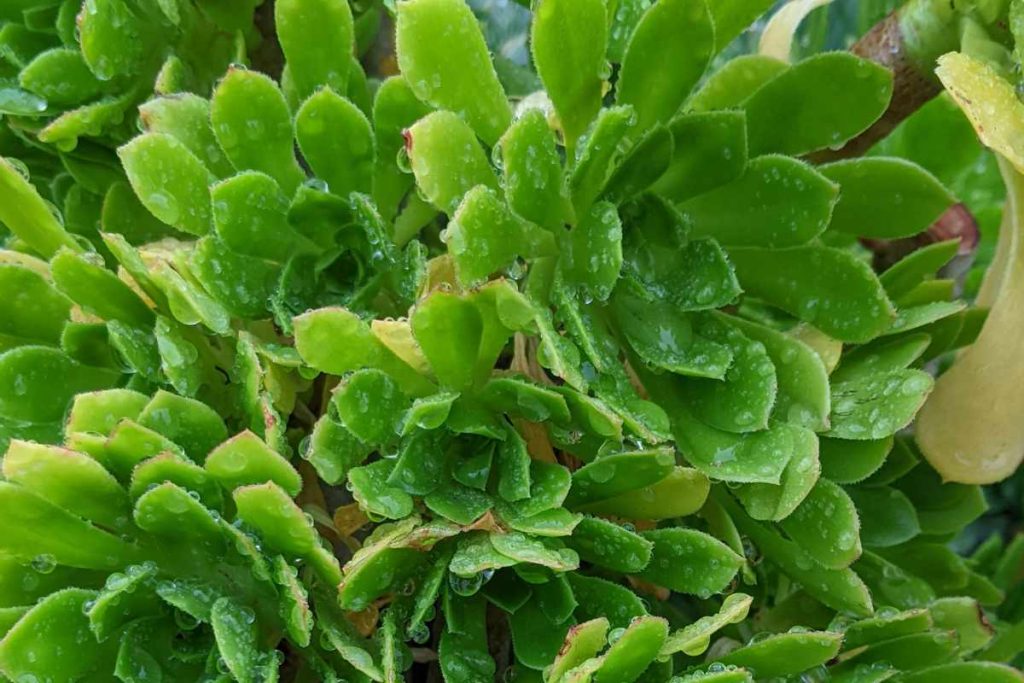
How can I tell if my Aeoniums are getting too much water?
Overwatering is a common problem for them, and it can lead to root rot and other issues. Here are some signs that your Aeoniums may be getting too much water:
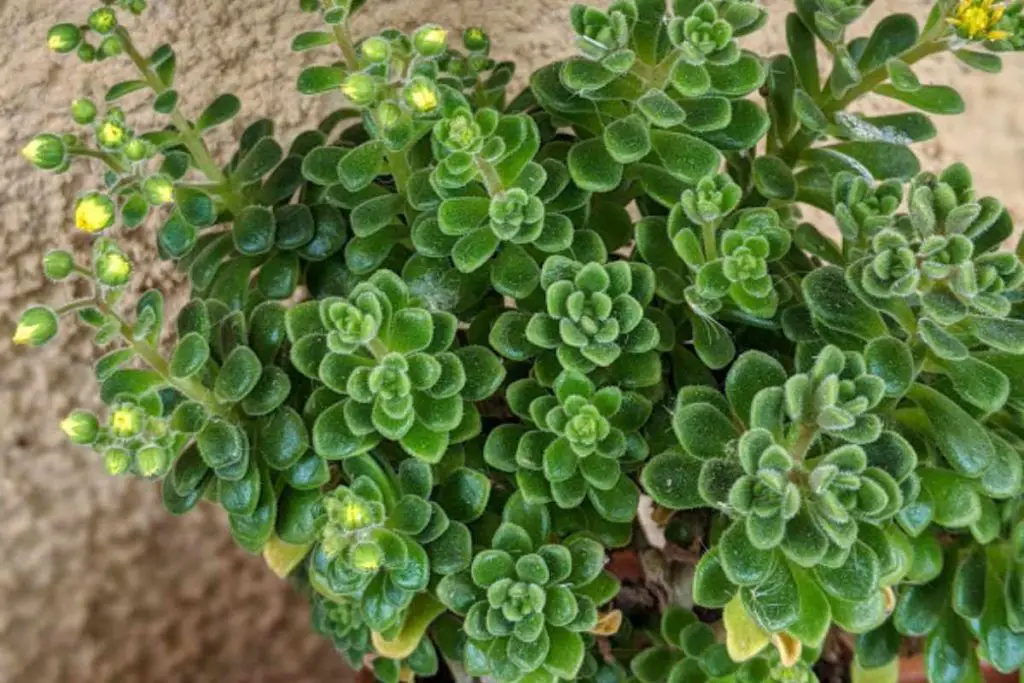
Yellowing leaves
If the lower leaves of your Aeoniums are turning yellow and dropping off, it may be a sign of overwatering. The leaves may also feel soft and mushy to the touch.
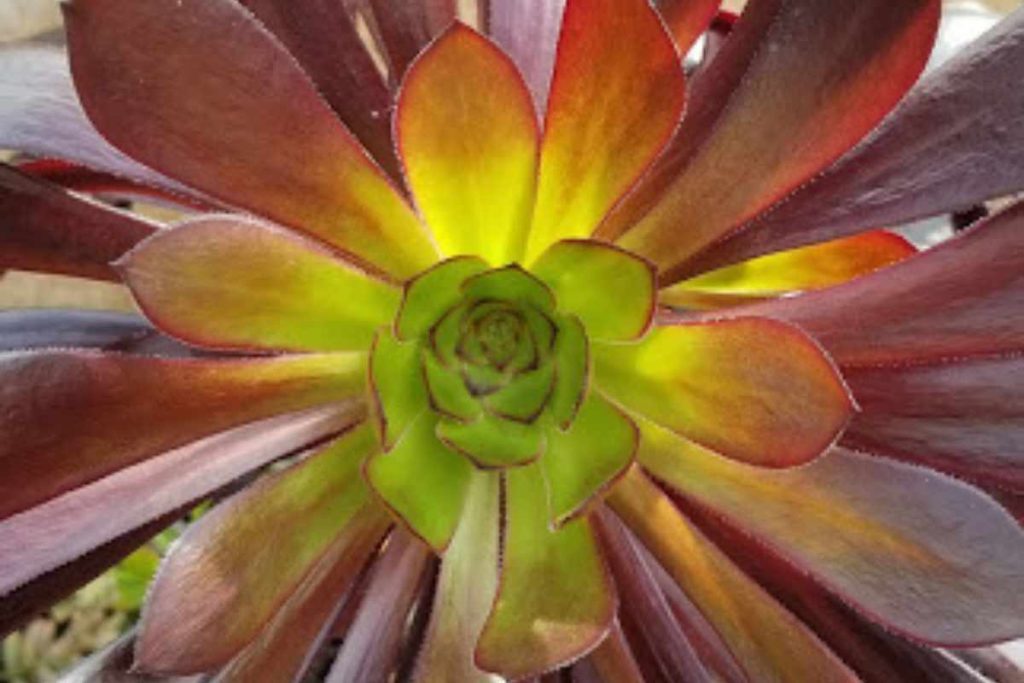
Wilting or drooping
While underwatering can cause them to wilt, overwatering can also cause the leaves to droop and wilt. This is because the roots may be unable to absorb oxygen and nutrients from the waterlogged soil.
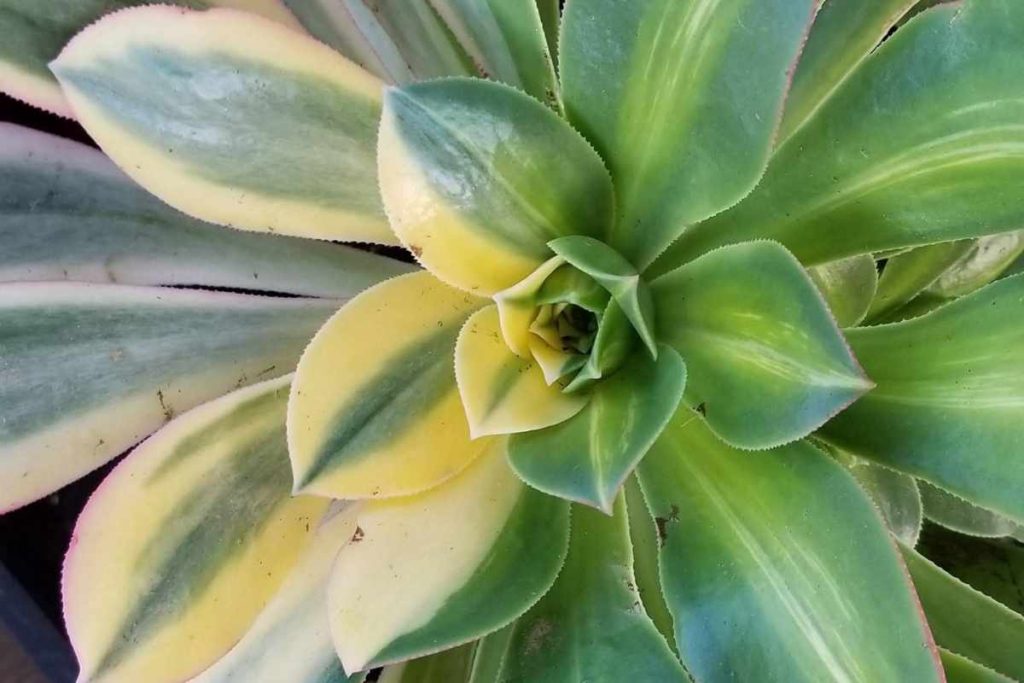
Root rot
If you notice a foul smell coming from the soil or see black, mushy roots when you remove the plant from its container, it is likely suffering from root rot. This is a serious condition that can be caused by overwatering, among other factors.
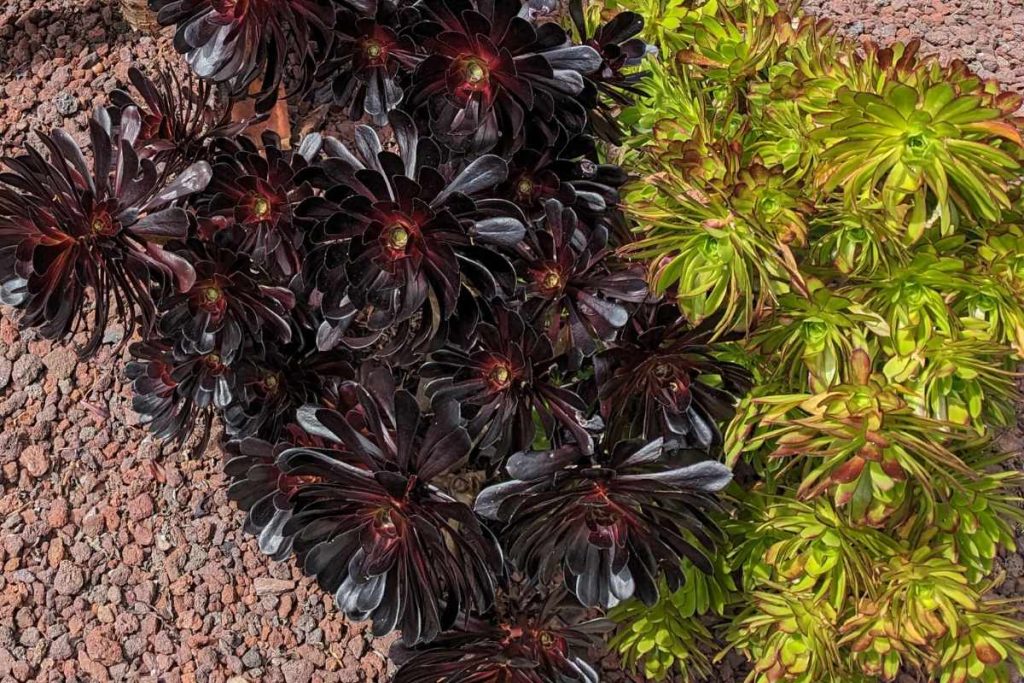
Slow growth
Overwatered Aeoniums may grow more slowly than healthy ones, as the waterlogged soil can prevent the roots from absorbing the nutrients they need.
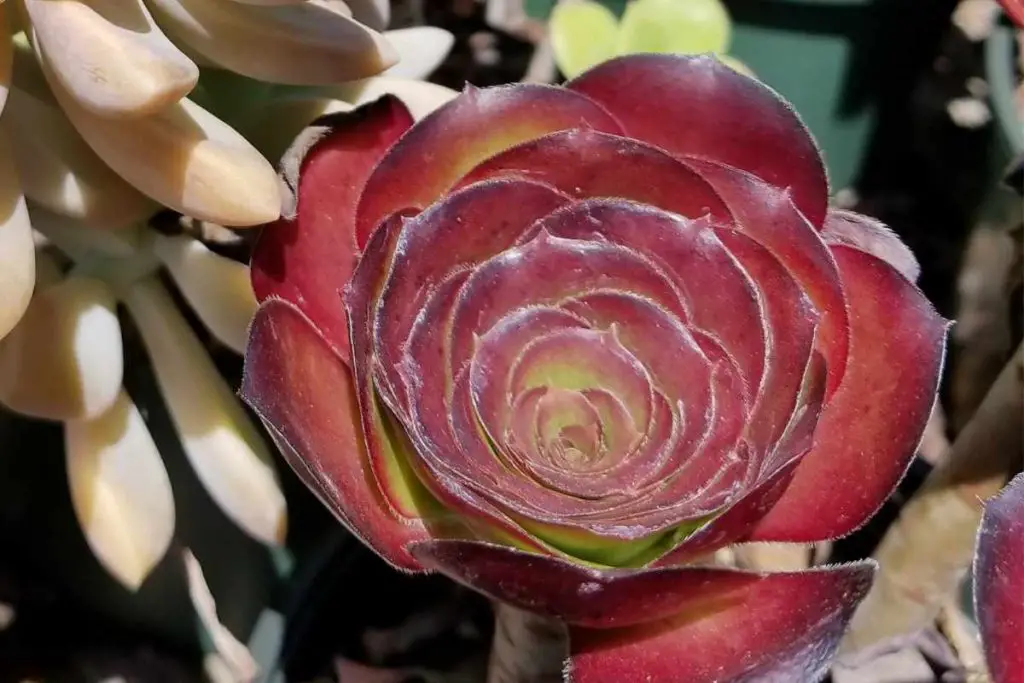
Mold or fungus
Excess moisture can create the perfect environment for mold and fungus to grow. If you notice white or black spots on the leaves or soil, it may be a sign of overwatering.
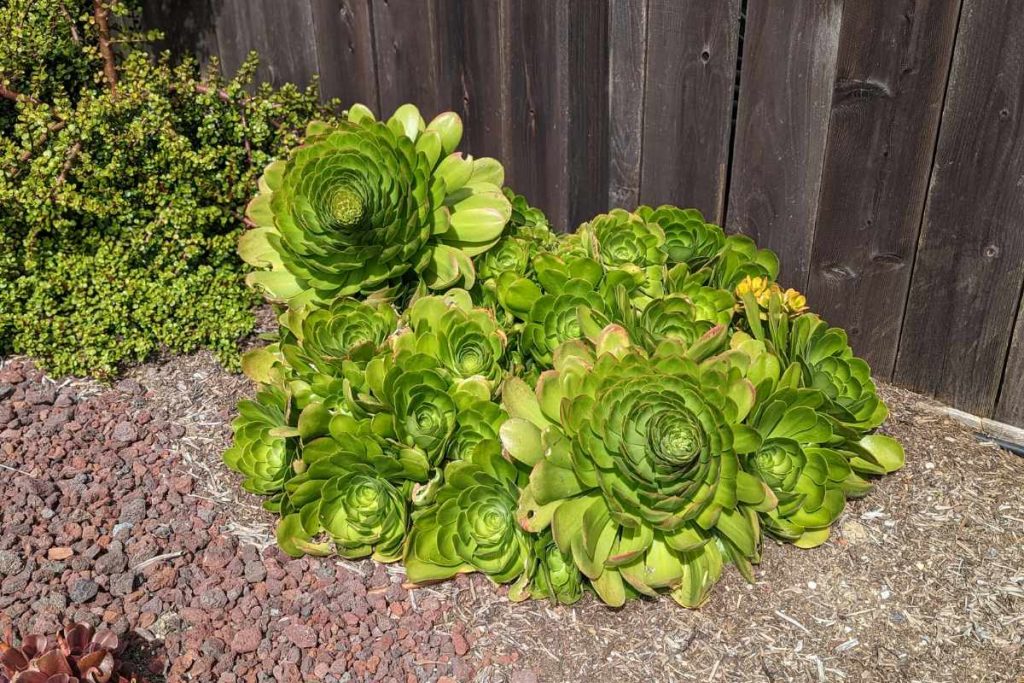
To avoid overwatering your Aeoniums, make sure to let the soil dry out completely between waterings. Water deeply and infrequently, rather than giving the plant small amounts of water frequently. You can also improve drainage by using a well-draining potting mix and adding perlite or sand to the soil.
You might also like: Top 5 Reasons Why Aeonium Lose Leaves and How You Can Deal With It
Fertilizer
Fertilize once a month during the growing season (spring and summer) with a balanced, water-soluble fertilizer. Avoid fertilizing during the winter when the plant is dormant.
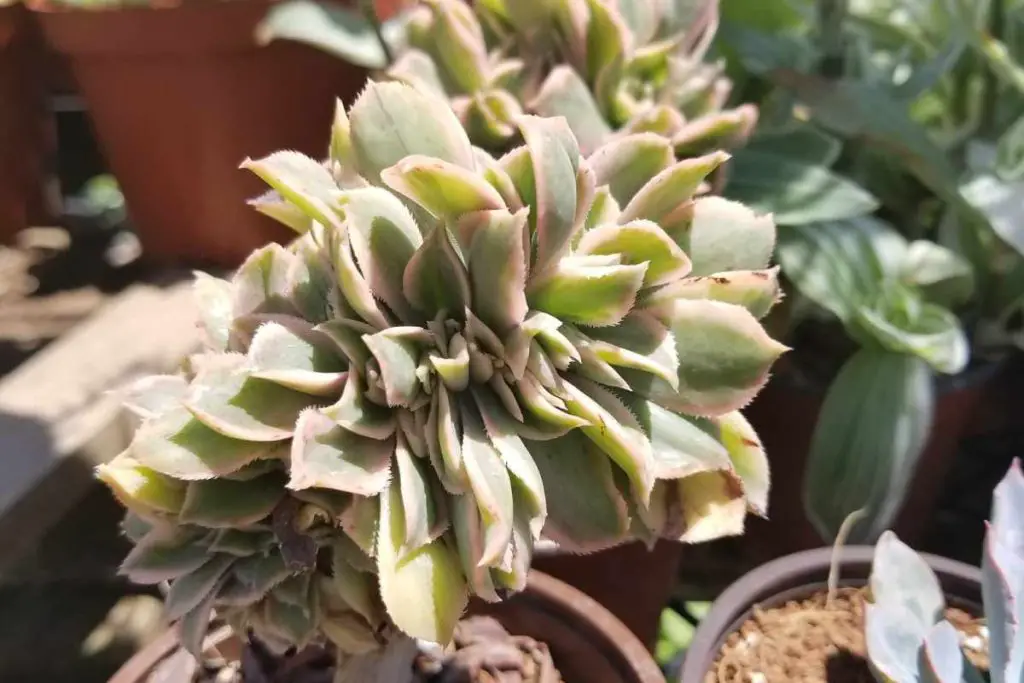
Caring for Aeonium Succulents:
In addition to proper watering and sunlight, there are a few other important factors to consider when caring for Aeonium succulents:
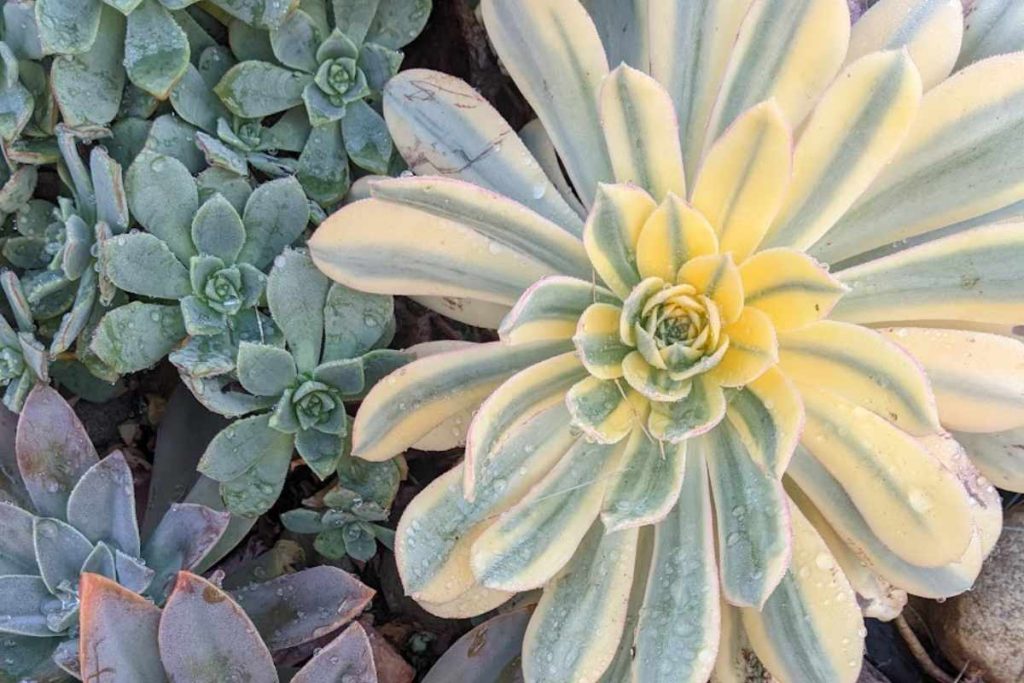
Pest control
They are generally resistant to pests, but they can occasionally attract mealybugs or aphids. To control these pests, use an insecticidal soap or neem oil spray.
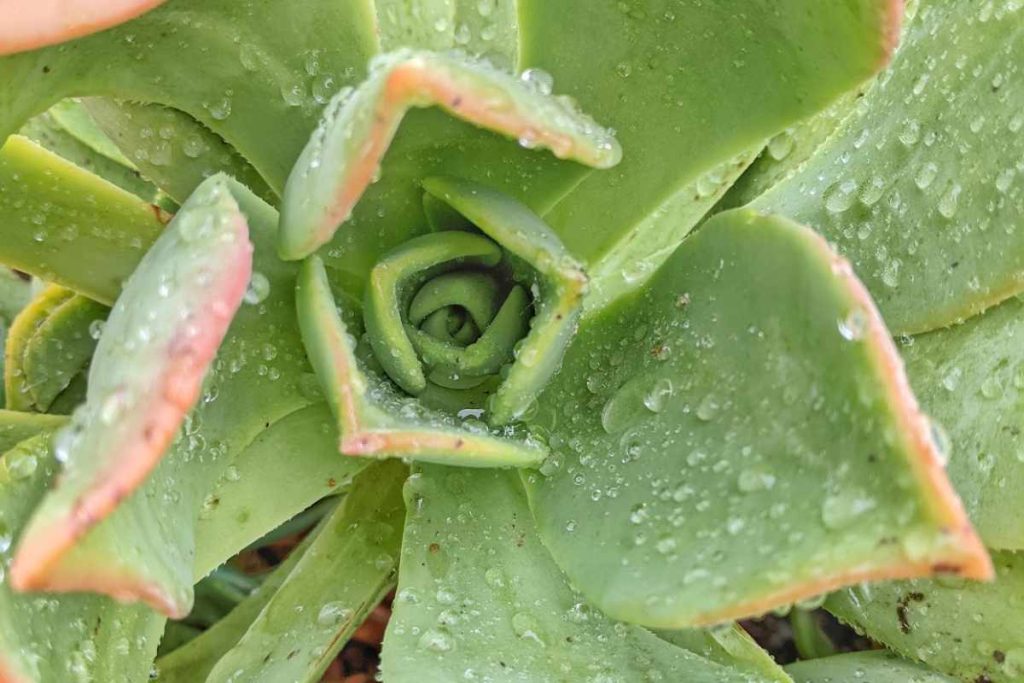
Pruning
They can grow leggy or become overgrown over time. To keep them looking neat and healthy, trim off any dead or damaged leaves as needed and remove any offsets (small plants growing from the base of the main plant) to propagate new plants.
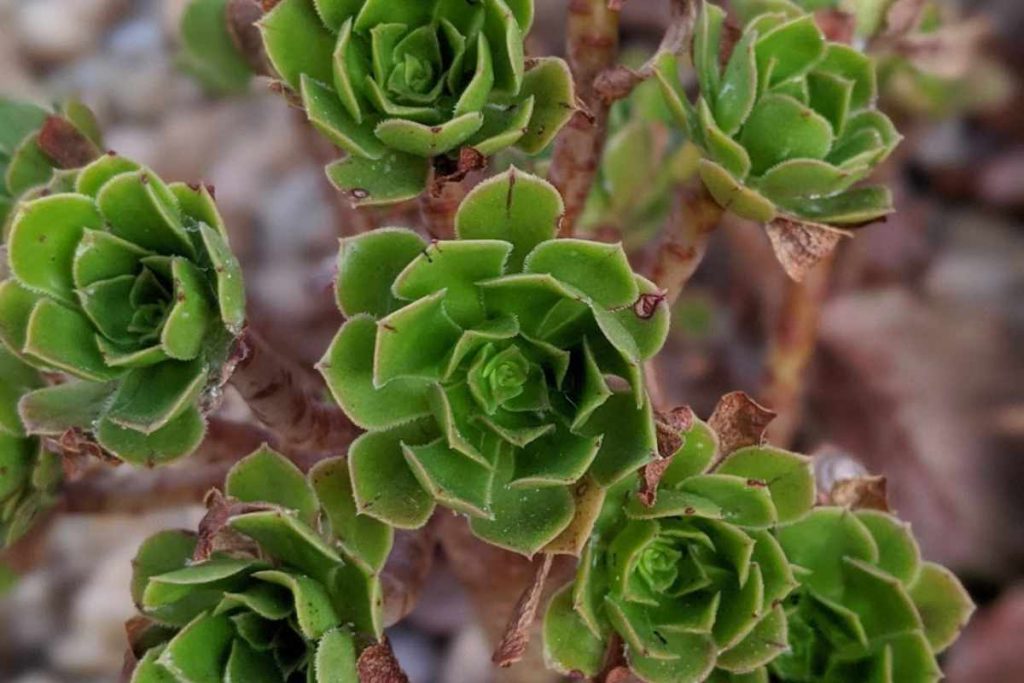
Repotting
Aeonium plants do not need to be repotted frequently, but if the plant becomes too large for its pot or the soil has become depleted, it may be time to repot. Choose a pot that is slightly larger than the current one and use a well-draining soil mix.
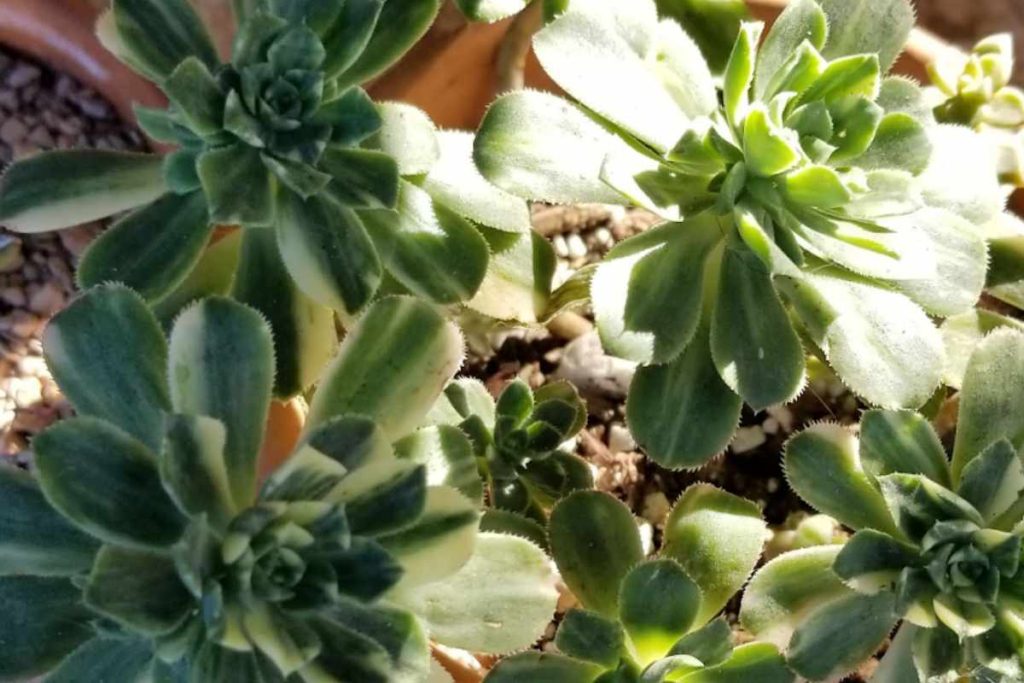
Propagating Aeonium Succulents:
Aeonium plants can be easily propagated from offsets or by taking stem cuttings. When you take stem cuttings, you’ll also be encouraging your Aeonium to branch and become more bushy. Here’s how to propagate Aeonium succulents:
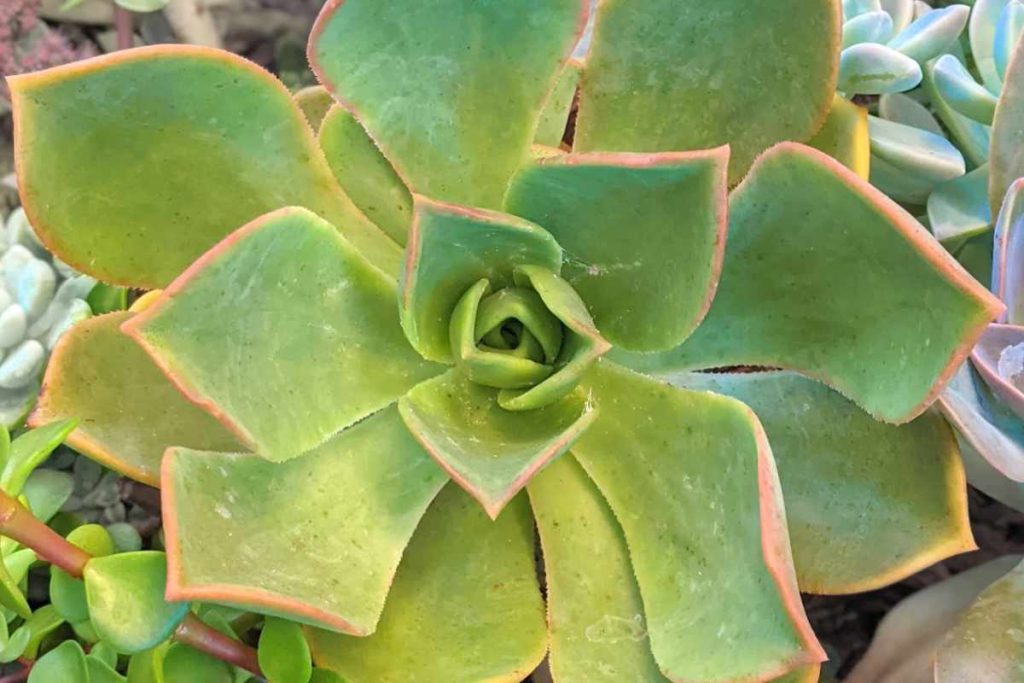
To propagate from offsets:
- Carefully remove the offset from the main plant by gently twisting it or cutting it with a clean, sharp knife.
- Allow the offset to callous over (develop a hard, dry surface) for a few days before planting. This will help prevent rot and encourage healthy growth.
- Plant the offset in a small pot filled with well-draining soil mix and water sparingly.
- Place the pot in a sunny location and continue to care for the plant as usual, watering when the soil is dry and fertilizing during the growing season.
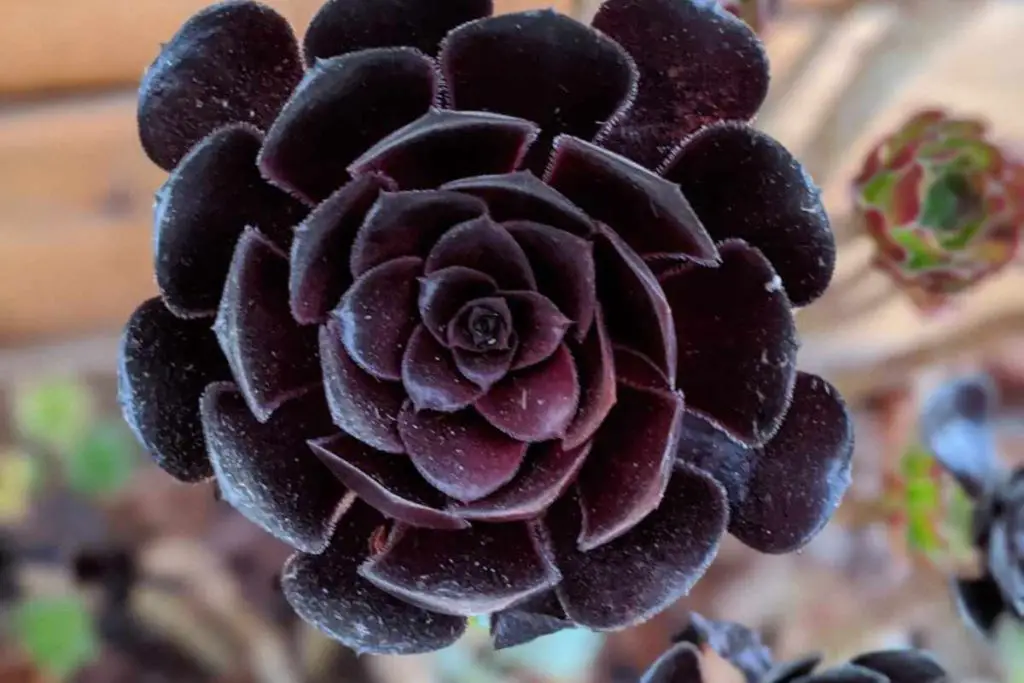
To propagate from stem cuttings:
- Cut a healthy stem from the main plant using a clean, sharp knife.
- Allow the cutting to callous over for a few days before planting.
- Fill a small pot with well-draining soil mix and place the cutting in the pot, making sure that the cut end is buried in the soil.
- Water the cutting sparingly and place the pot in a sunny location.
- As the cutting grows and establishes roots, it will begin to form new leaves and become a fully-fledged Aeonium plant.
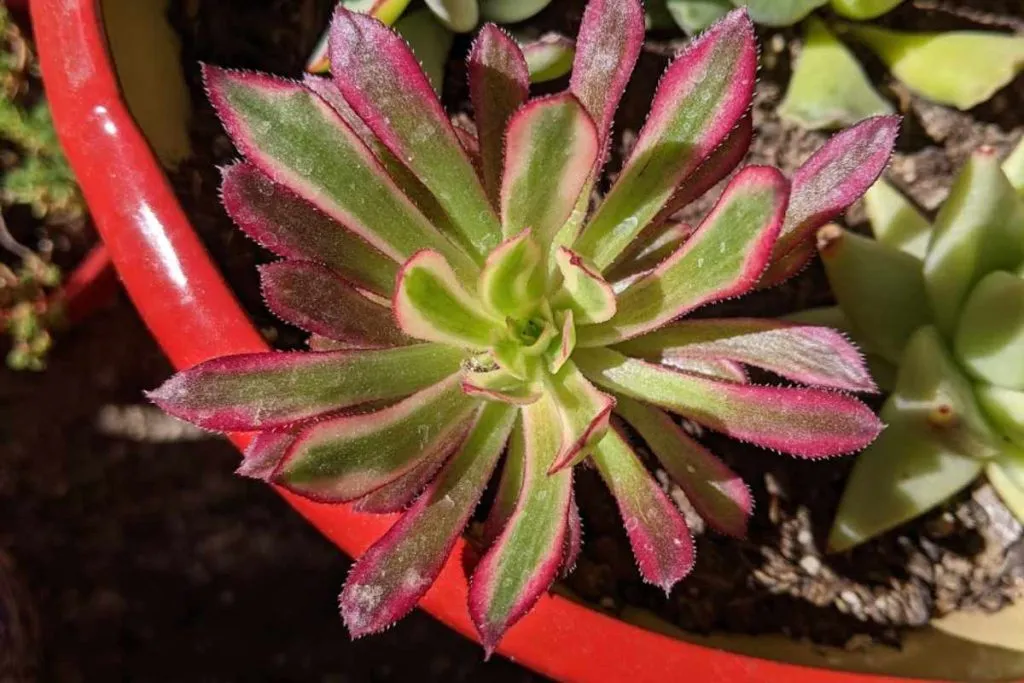
Aeonium Are Monocarpic: Death Bloom
Monocarpic plants go through a specific life cycle in which they grow vegetatively for a period of time, then flower, produce seeds, and die. The length of this life cycle can vary greatly depending on the specific species of Aeonium and its growing conditions. Some plants may take several years to flower and produce seeds, while others may flower and die within a shorter time frame.
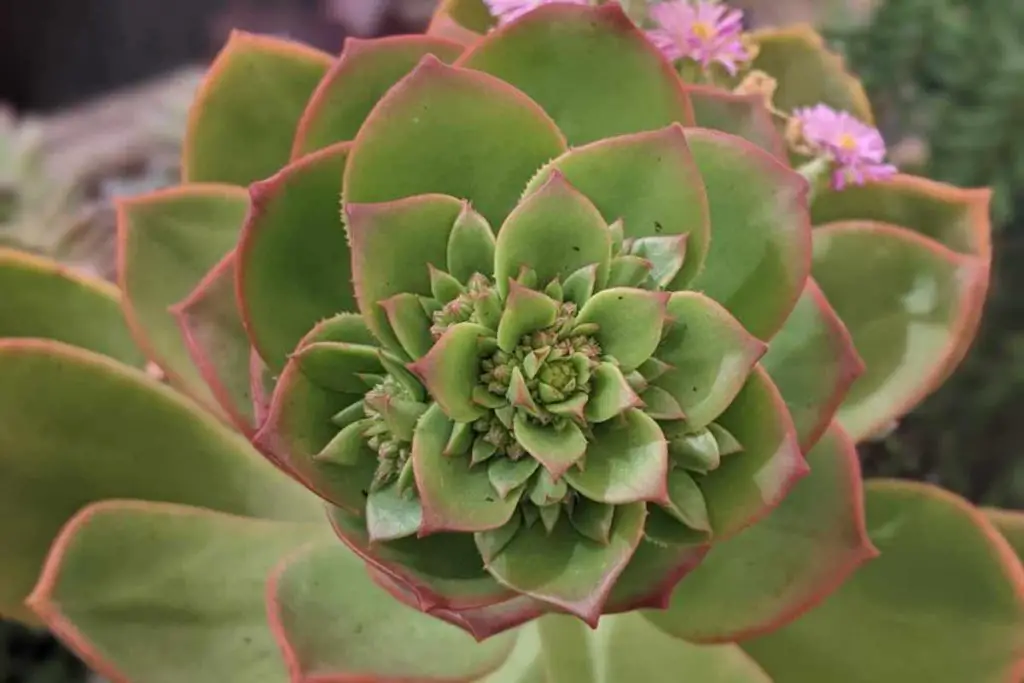
The death blooms of a monocarpic Aeonium plant are typically the result of the plant’s life cycle coming to an end. Once the plant has flowered and produced seeds, it has completed its reproductive mission and is no longer needed. As a result, the plant begins to die off, starting with the flowers and moving on to the rest of the plant.
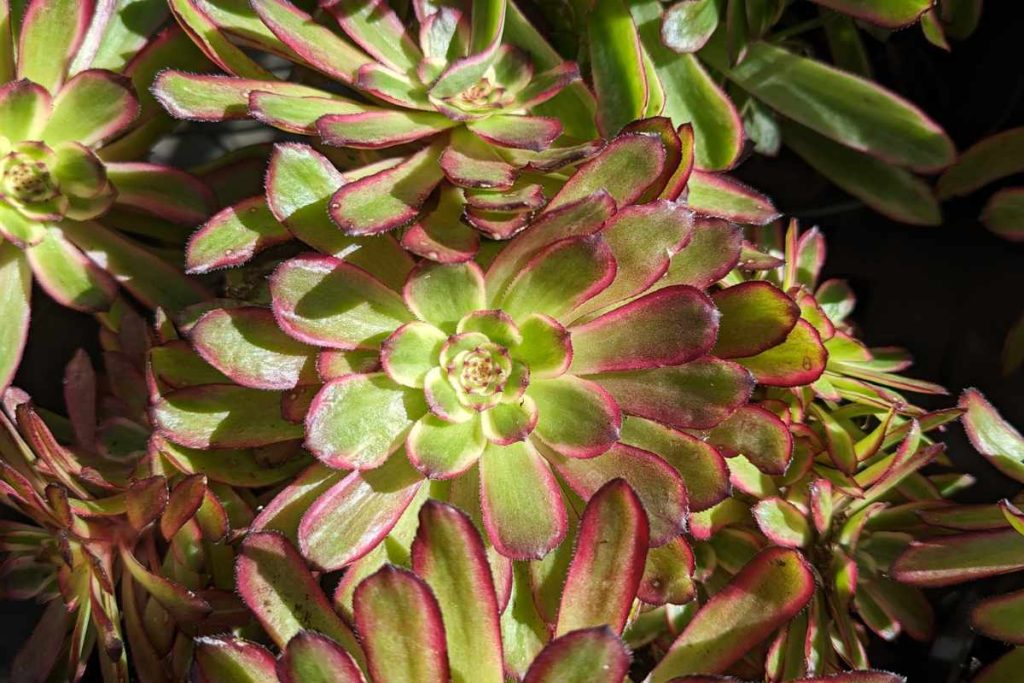
Read more about monocarpic succulents and their death bloom here: Monocarpic Succulents: The Ultimate Guide to Growing and Caring for These Unique Plants and 4 Ways You Might Be Able to Save Yours From a Death Bloom
What Causes Aeonium Stems To Bend?
Nature is rarely perfectly straight lines and symmetrical shapes. Aeonium succulents, like most plants, often grow in imperfect, slightly unbalanced forms. It’s natural and normal for their stems and rosettes to lean or bend to some degree. Some key points to explain this to someone:
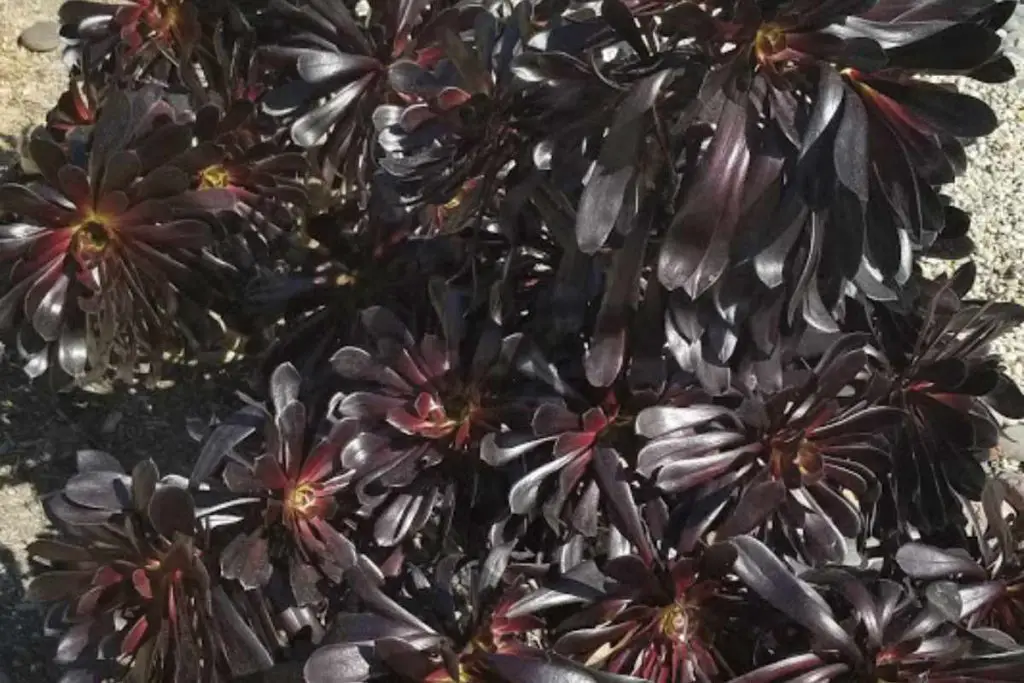
Light Source
• Aeoniums naturally grow towards the light, so their stems will bend and lean to face the direction of the strongest light source. This helps the plant optimize photosynthesis.
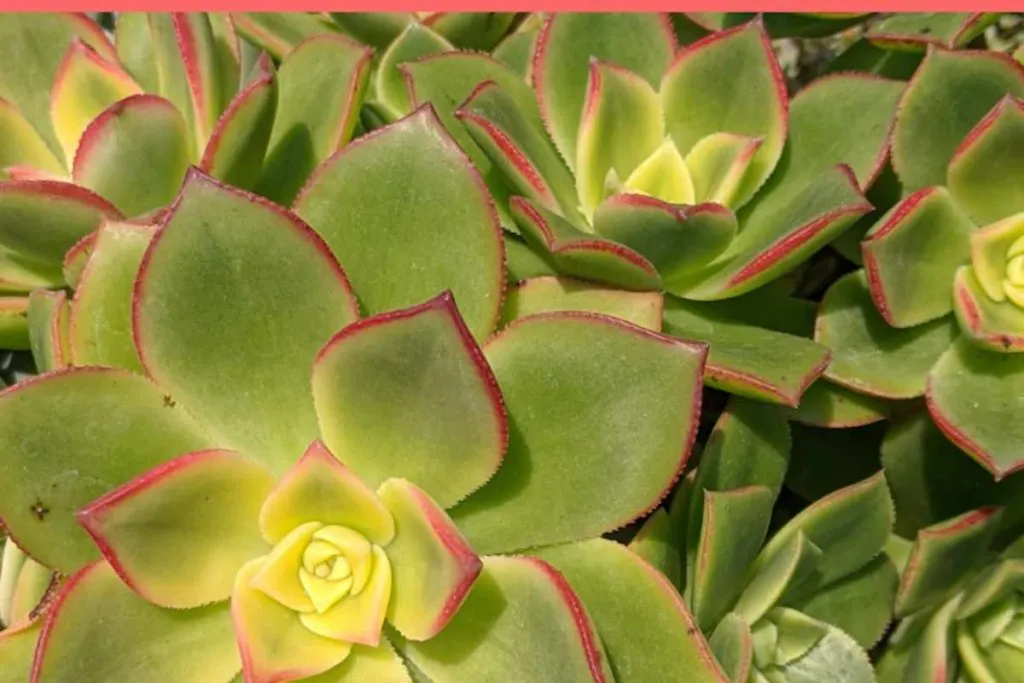
Weight
• The weight of the rosettes and leaves can cause the stem to droop or bend over time. Even with the proper conditions, as the rosettes get larger, they get heavier and pull the stem down with gravity.
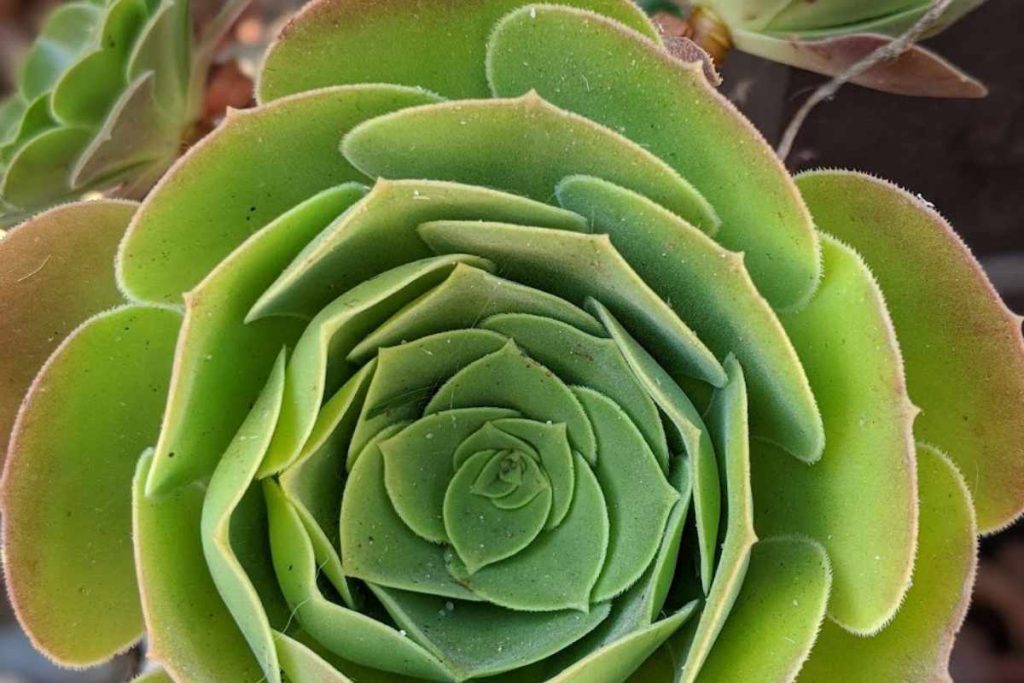
Bred Intentionally
• Some cultivars are bred specifically for their bent or trailing nature. Certain types, like Aeonium haworthii ‘Kiwi’ and Aeonium ‘Zwartkop’ often grow with an arched or hanging habit on purpose. Bends and leans are part of their unique character.
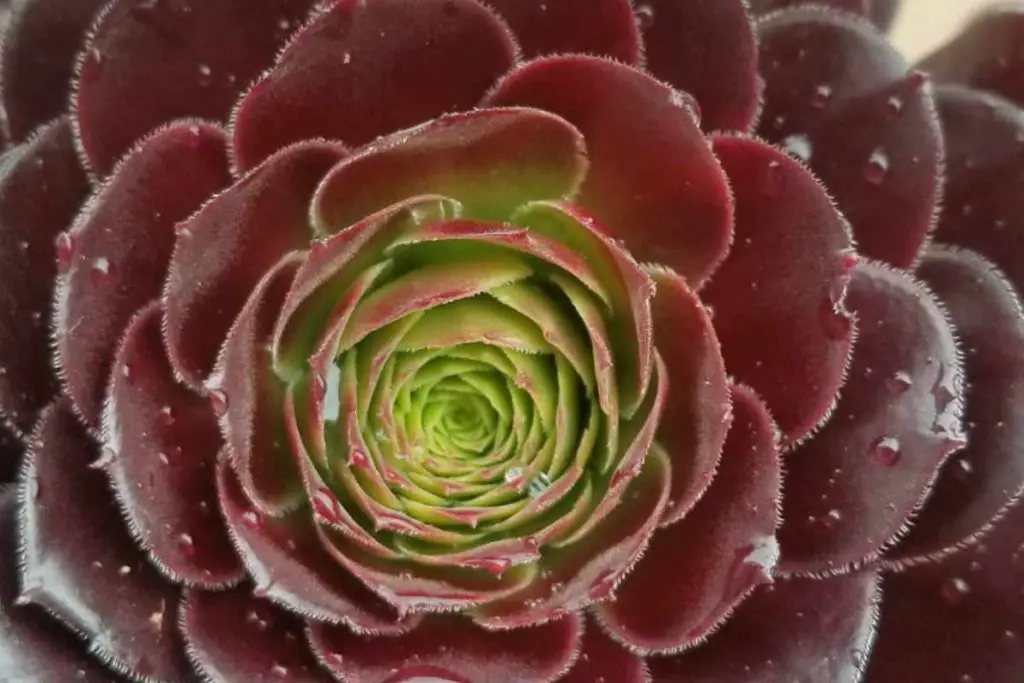
How to Keep it Upright
• If desired, you can gently stake and tie the stem to help support it in a more upright position. But unless severe, bending will not harm the plant and is generally the result of environmental factors or natural development.
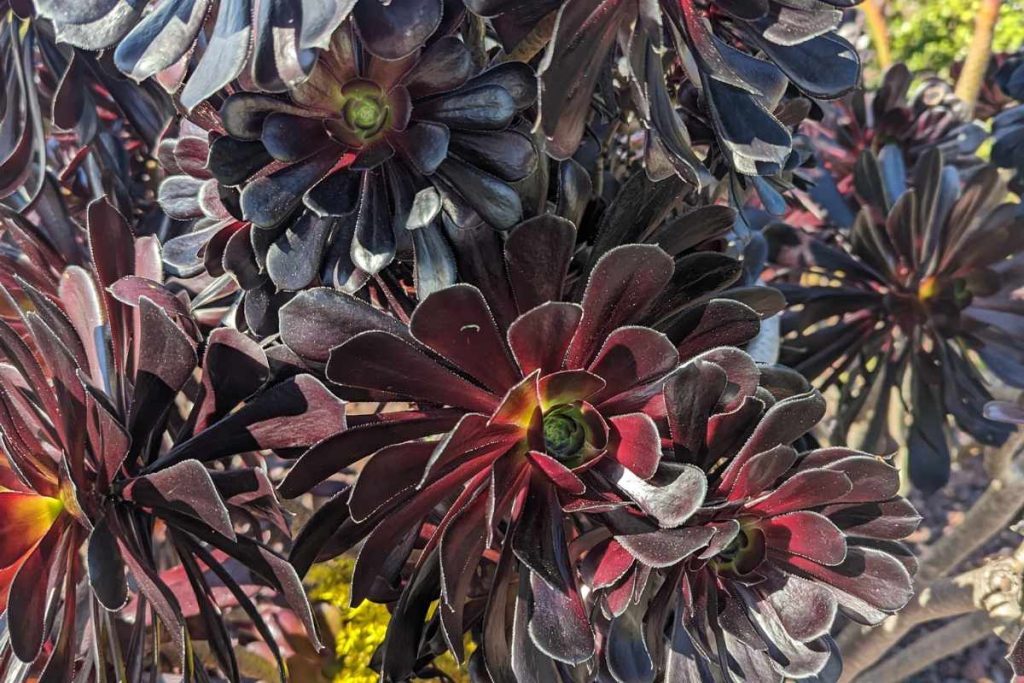
Minor bending and leaning is harmless and will not affect the health of the plant. They do not need to stand up perfectly straight to thrive. As long as the bend is gradual and not sudden or excessive, it is purely cosmetic.
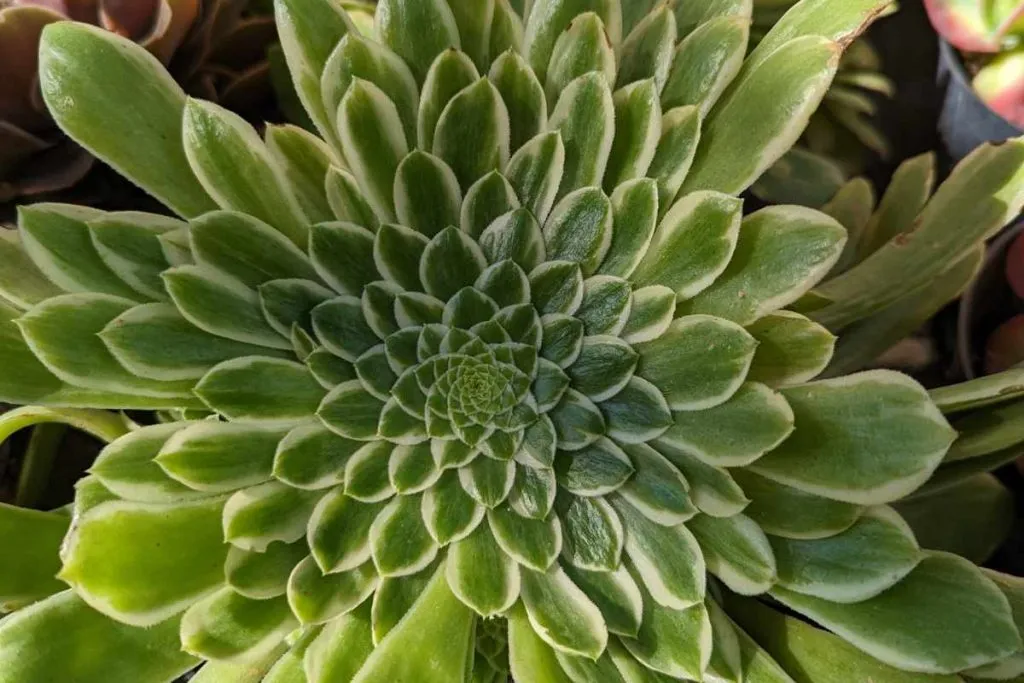
These beauties do not need perfect posture to be healthy. Minor imperfections like gentle bends and leans should be accepted and even appreciated as part of the plant’s organic shape and form. Natural asymmetry is beautiful! With the right conditions, yours can still thrive despite its imperfection.
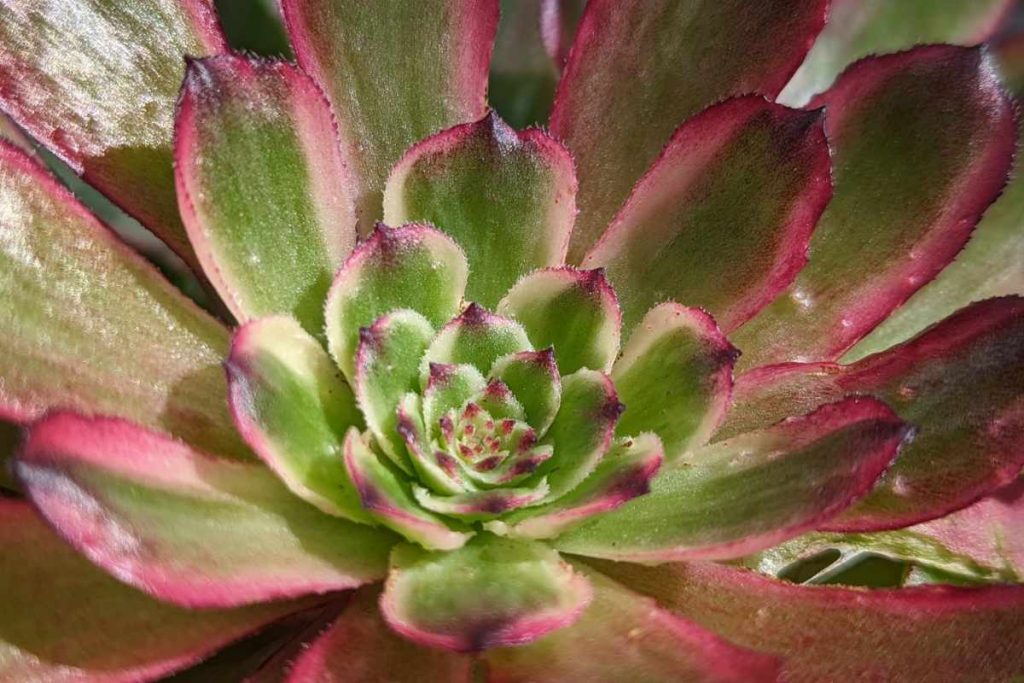
How do you fix a top heavy Aeonium?
To fix a top-heavy Aeonium, you can prune it by cutting off the top of the stem. This will help the plant to become more balanced and encourage new growth. You can also move the plant to a sunnier spot, as this will help it to become bushier and more balanced.
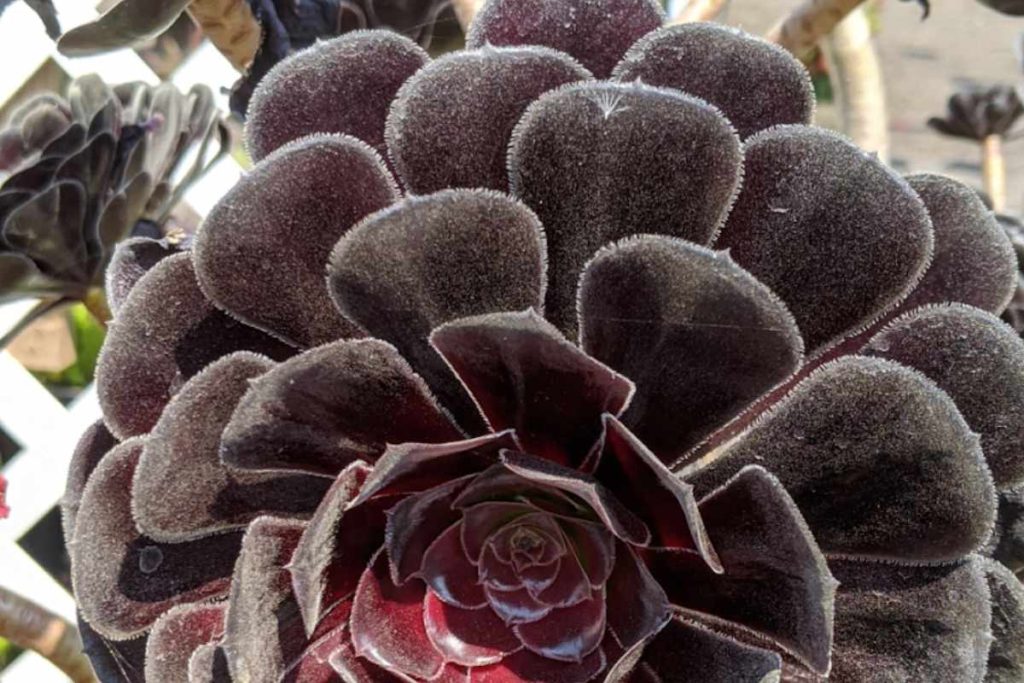
What Happens When Aeoniums Go Dormant?
Like many other types of succulents, these plants may go dormant during periods of stress or unfavorable growing conditions. Dormancy is a natural process that allows plants to conserve energy and resources when conditions are not optimal for growth.
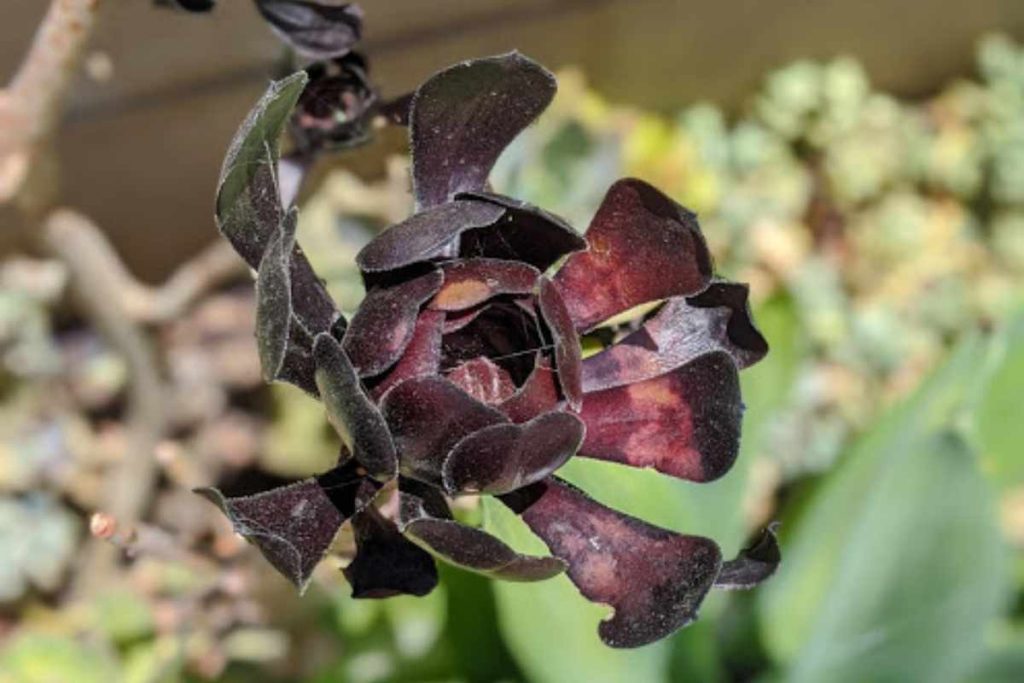
Growth Slows or Stops
During dormancy, they may stop growing and producing new leaves, and their leaves may appear wilted or yellowed. This is a normal response to a lack of water, excessive heat or cold, or other environmental stressors.
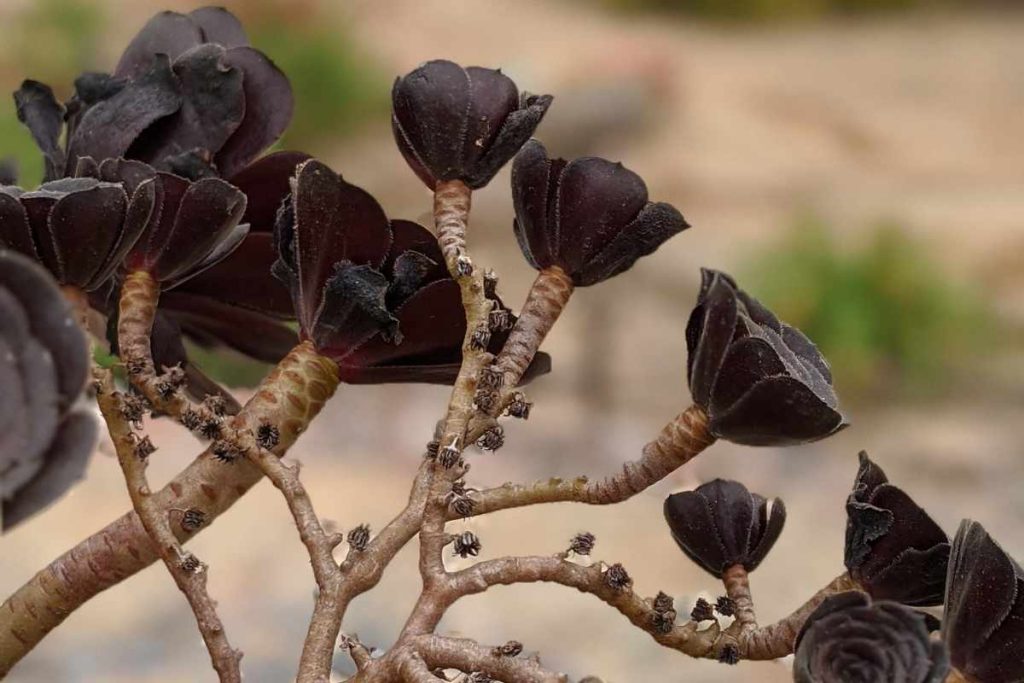
Dormant Season
Aeonium plants typically go dormant during the summer months, when temperatures are warmer and sunlight is more intense. However, they may also go dormant in response to other stressors, such as drought or over-watering.
You might also like: Succulent Dormancy: 4 Easy Ways to Tell if Your Succulent is Going Dormant
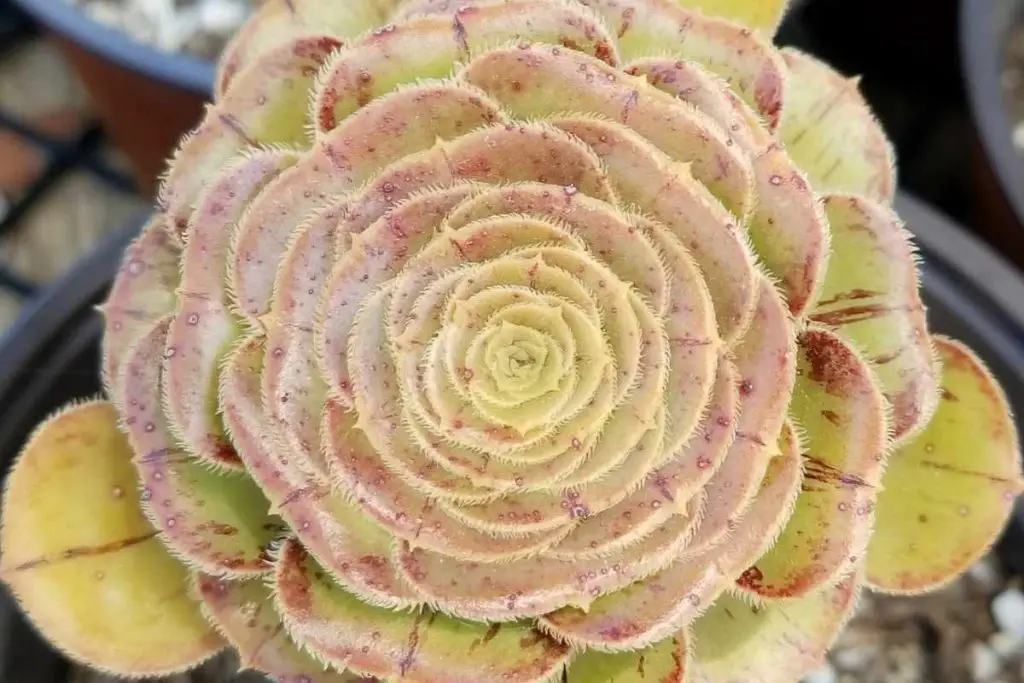
Care During Dormancy
To care for an Aeonium plant during dormancy, it is important to reduce watering and fertilizing, and to protect the plant from extreme temperatures. Once the plant begins to emerge from dormancy, it is important to gradually increase watering and fertilizing and to provide the plant with adequate sunlight and proper care to encourage healthy growth.
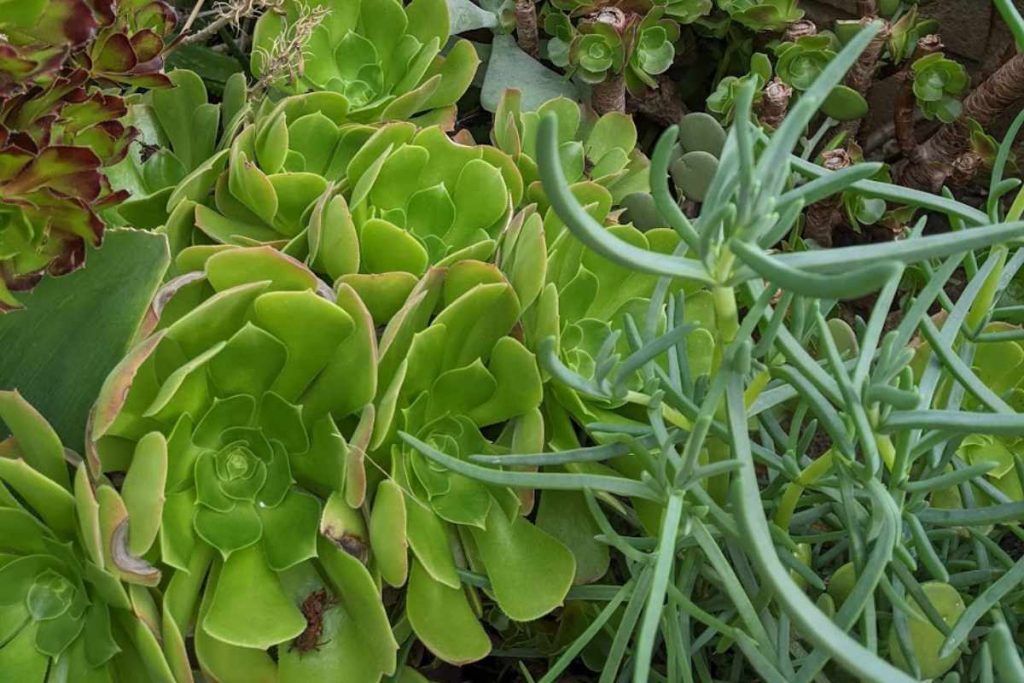
It is important to note that not all Aeonium plants go dormant, and the specific dormancy patterns of them may depend on its species and growing conditions. It is best to research the specific needs of the specific species that you are growing to ensure that it receives the proper care and attention during periods of dormancy.
How can I protect my Aeoniums from frost?
Aeoniums are generally sensitive to frost and can be damaged or killed by freezing temperatures. Here are some tips to protect your Aeoniums from frost:
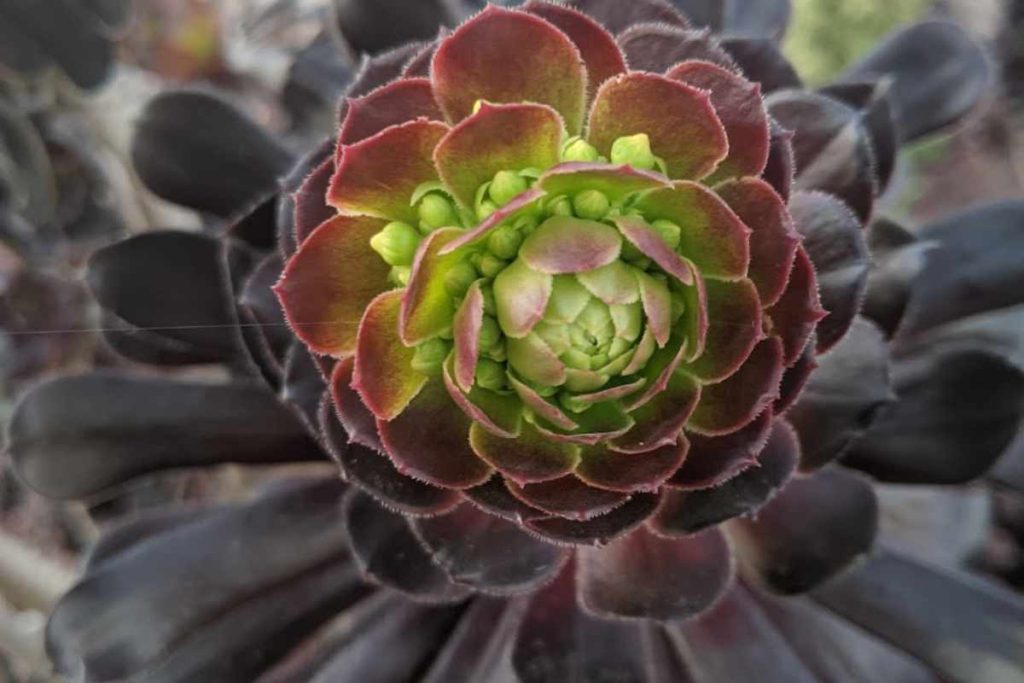
Move them indoors
If possible, move your Aeoniums indoors during cold weather. They should be kept in a cool, bright location with good ventilation and protection from drafts.
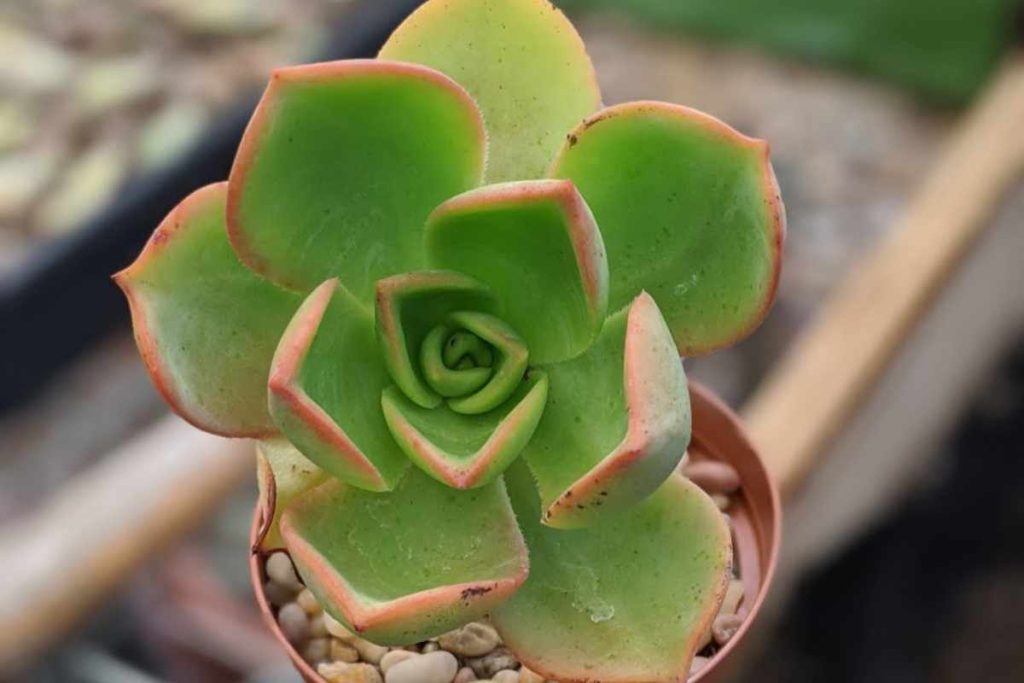
Cover them with a cloth or blanket
If you cannot move your Aeoniums indoors, you can cover them with a cloth or blanket to protect them from frost. Make sure the covering is not touching the leaves and that there is some ventilation to prevent moisture buildup.
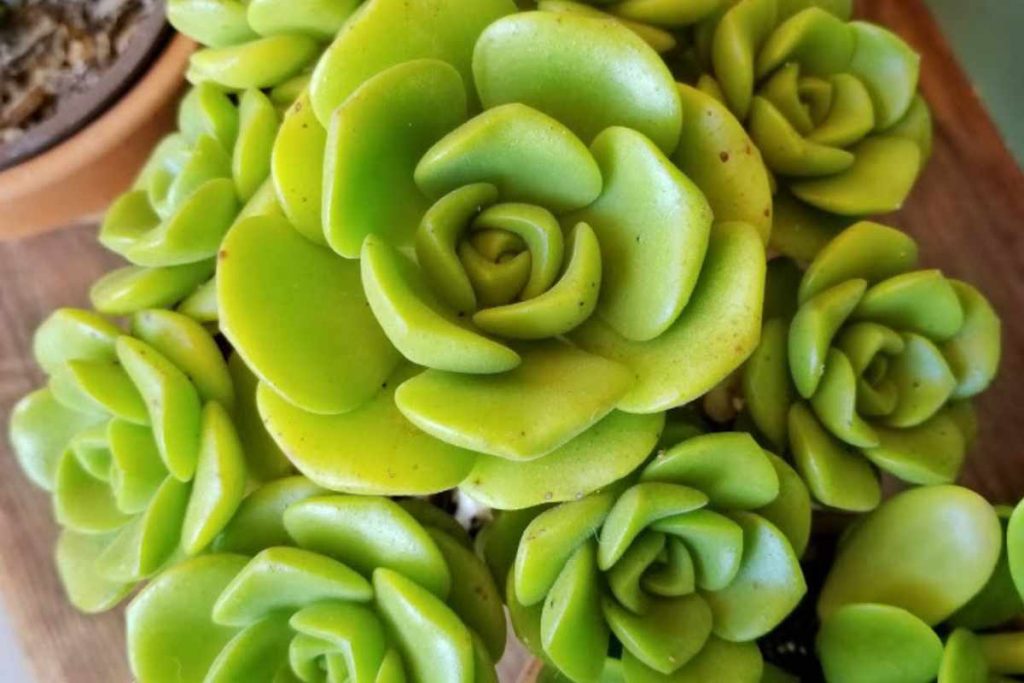
Mulch the soil
Mulching the soil around your Aeoniums can help keep the roots warm and protect them from frost. Use a layer of organic mulch, such as leaves or straw, to insulate the soil.
Remember, prevention is key when it comes to protecting them from frost. Keep an eye on the weather forecast and take action before frost sets in.
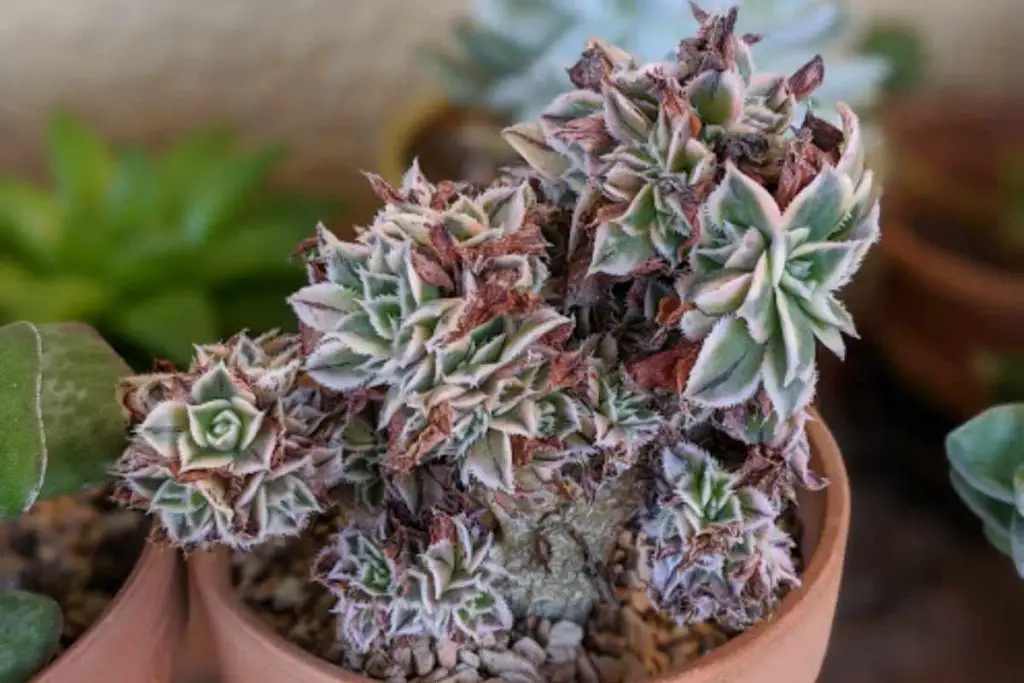
Can Aeonium plants be grown outdoors?
Aeonium plants can be grown outdoors in some climates. Here are the guidelines:
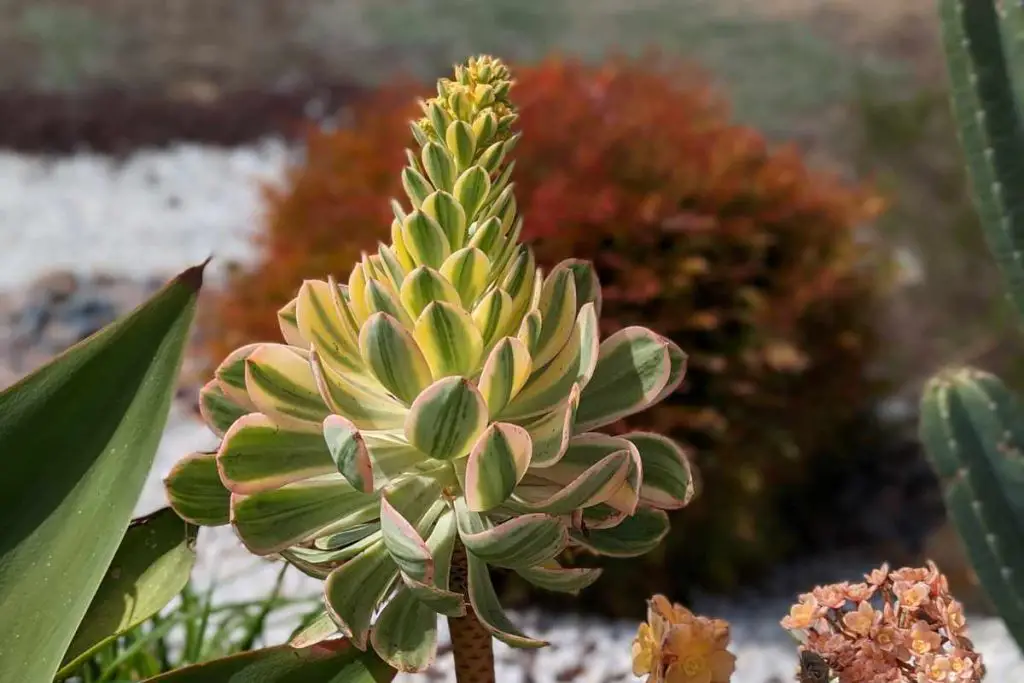
• Only grow Aeonium outdoors if temperatures remain above 65 F, the minimum recommended temperature for most species. If nights are freezing, it is best to keep them as a houseplant.
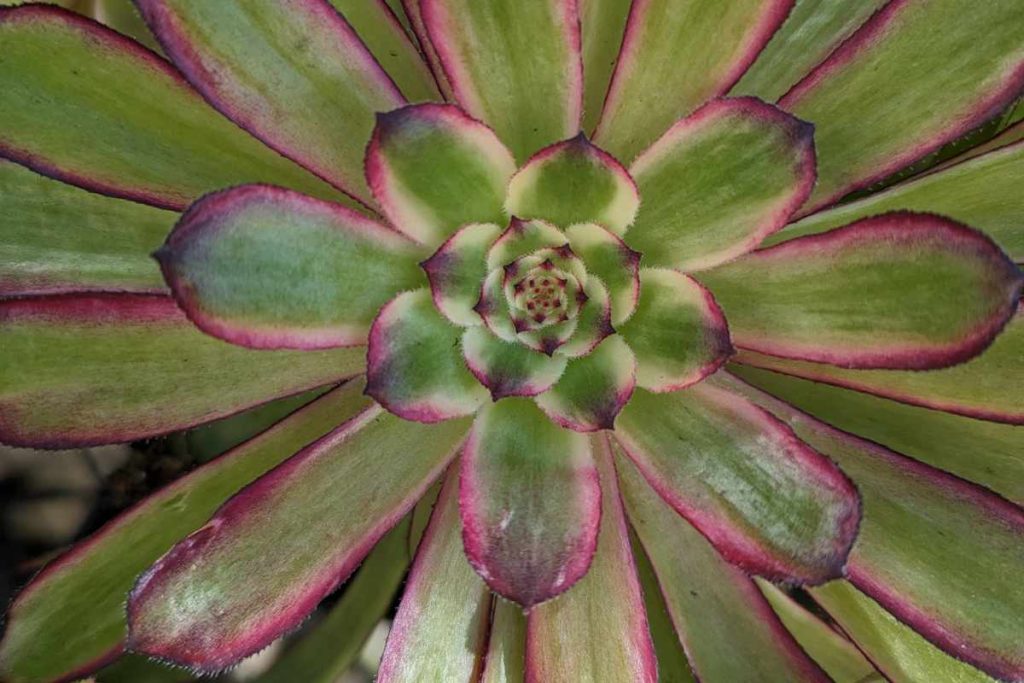
• Place them in a spot with bright light and well-draining soil. Direct sun can burn the leaves, especially if the plant is not accustomed to intense sunlight. Shelter it from the hottest rays of midday sun.
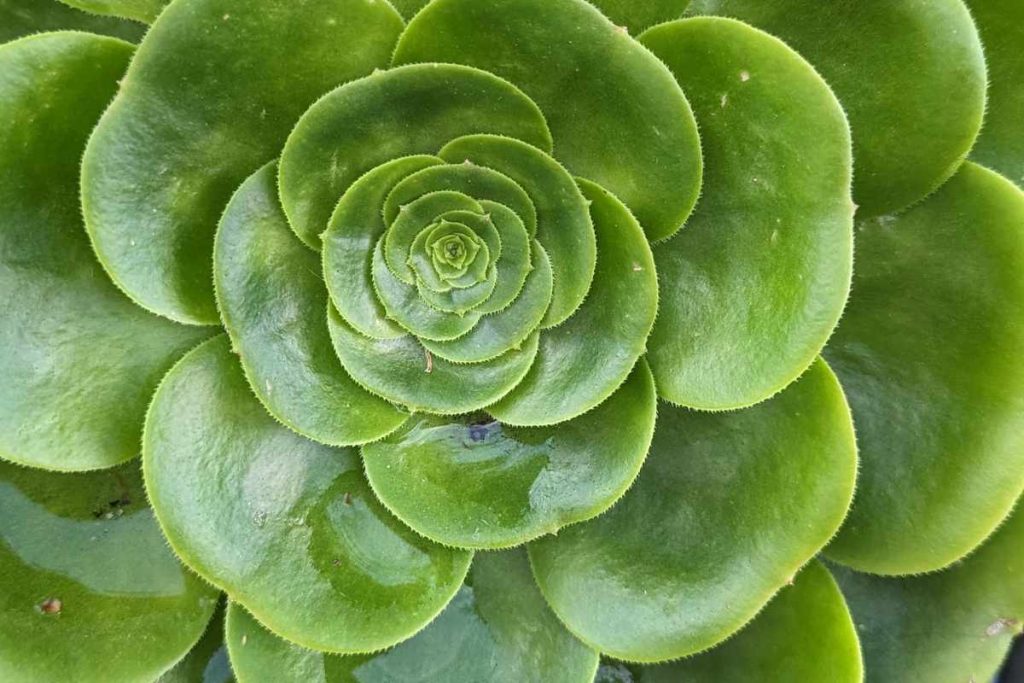
• Watch for pests and disease more closely. Outdoor conditions may lead to more pest infestations or fungal disease. Inspect your Aeonium regularly and treat any problems promptly before they spread. Repeat treatments may be needed to fully get rid of the infestation. The most common problem I have with mine are mealybugs. Luckily treatment is pretty simple.
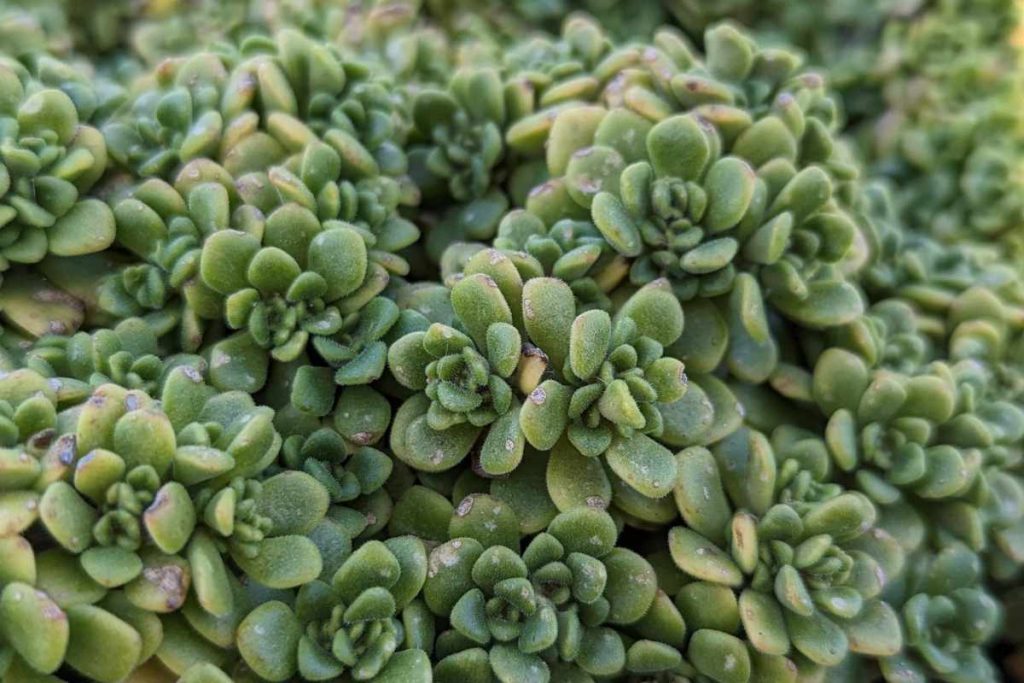
• Bring them inside before temperatures drop in fall. They cannot tolerate frost, so move it indoors if temperatures drop below 65 F. Allow it to acclimate to indoor conditions for a week or two before colder weather arrives.
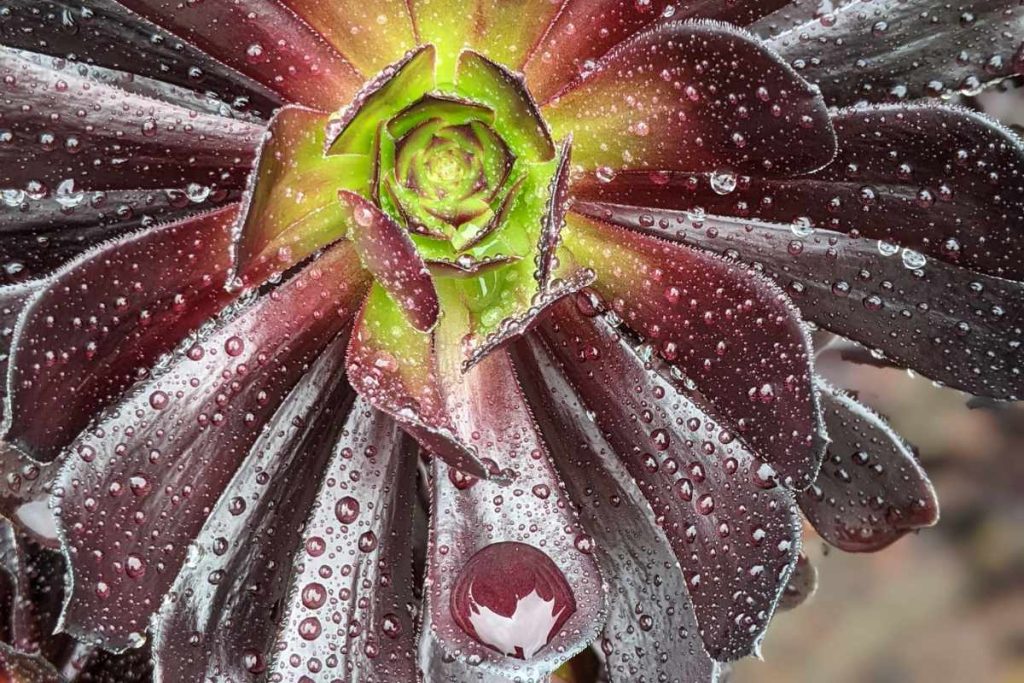
• Consider permanent outdoor options only if your climate allows. If you live in a warm area with minimal frost, they can be planted in the ground or in containers outdoors year-round. Choose a spot with light shade or sunlight protection during the hottest parts of the day. Mulch around the plant to retain some moisture in the soil. My larger specimens are all in the ground and are thriving. They come out of dormancy when temperatures cool down and are just stunning.
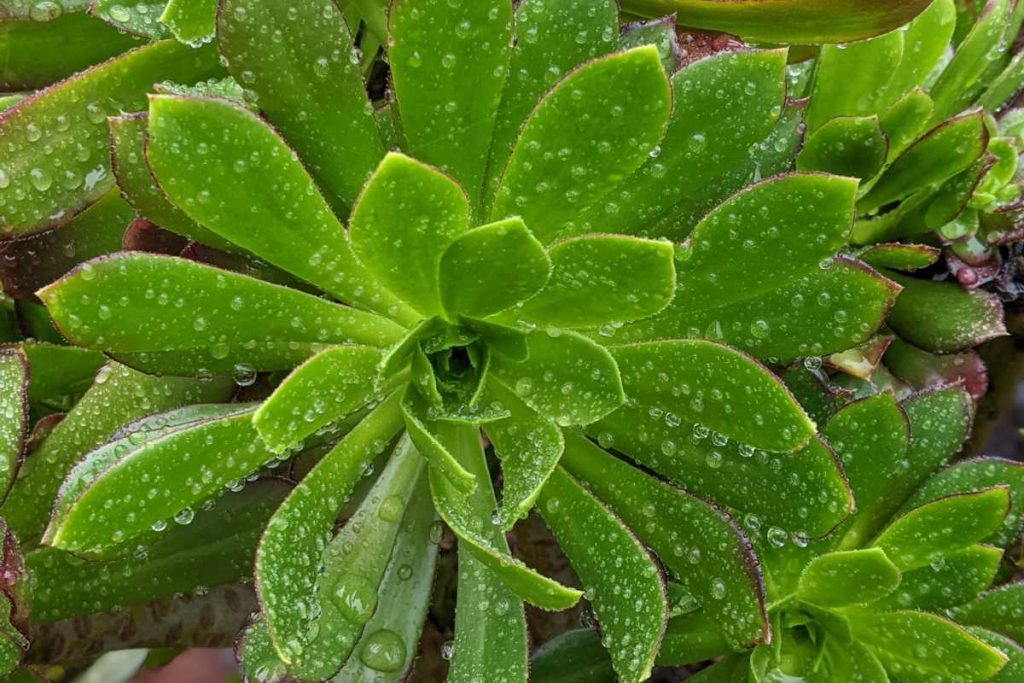
With attention and adjustments, Aeonium can benefit from time outside in suitable climates. However, many species do best as indoor houseplants to maintain the right conditions. Monitor yours closely if moving it outside and bring it in before temperatures drop in fall. With some care, these interesting succulents can thrive in or out of the home.
You might also like: Aeonium ‘Lily Pad’: The Sticky-Leafed Succulent You Need to Know About
Here are some tips for acclimating Aeonium plants to indoor conditions:
Gradually introduce it to indoor conditions.
If moving the plant indoors from outdoors, do so over the course of 1-2 weeks. This allows it to adjust to lower light and humidity levels gradually. Moving it in all at once can shock the plant and cause leaf drop or stress.
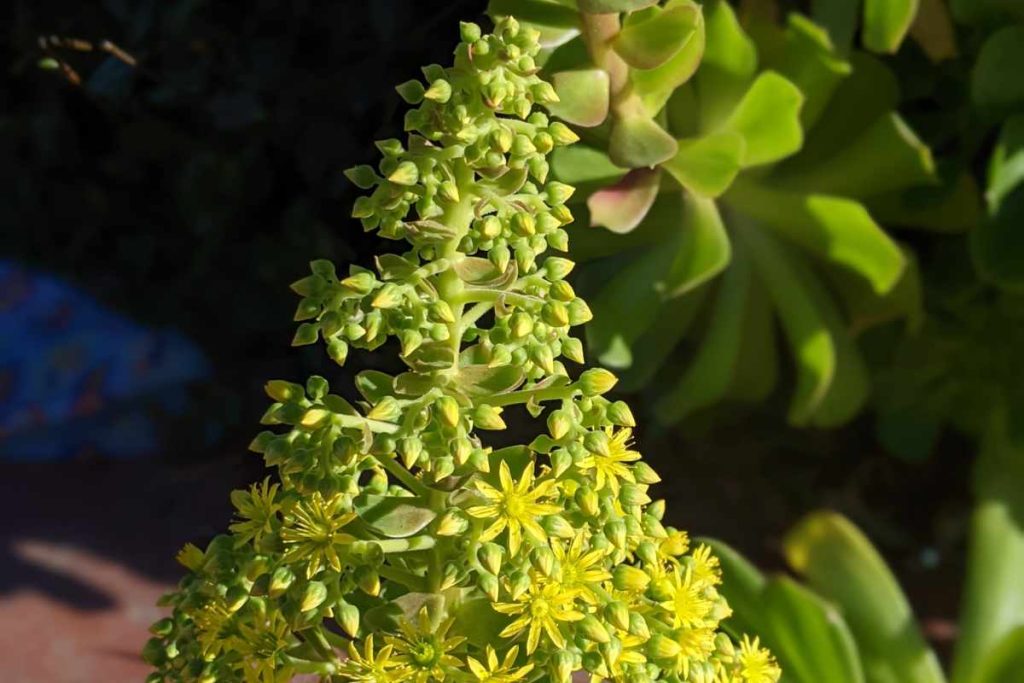
Provide lots of light.
They needs bright light to thrive indoors, so place it near a sunny window that gets lots of direct sunlight. If sunlight is limited, use a grow light to provide adequate illumination for 12-14 hours a day. Without enough light, Aeonium may become etiolated or drop leaves.
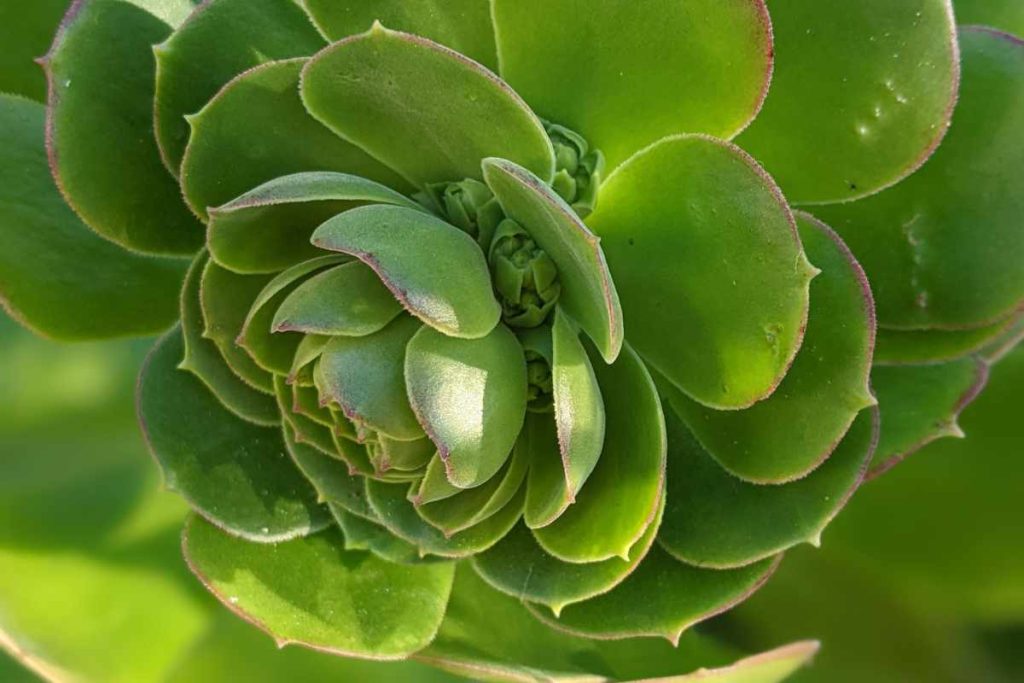
Adjust the watering.
Aeonium’s water needs will decrease with lower light indoors. Check the soil more frequently and only water when it is quite dry to avoid rot. The specific watering schedule will depend on the conditions in your home. It’s best to underwater them than overwater.
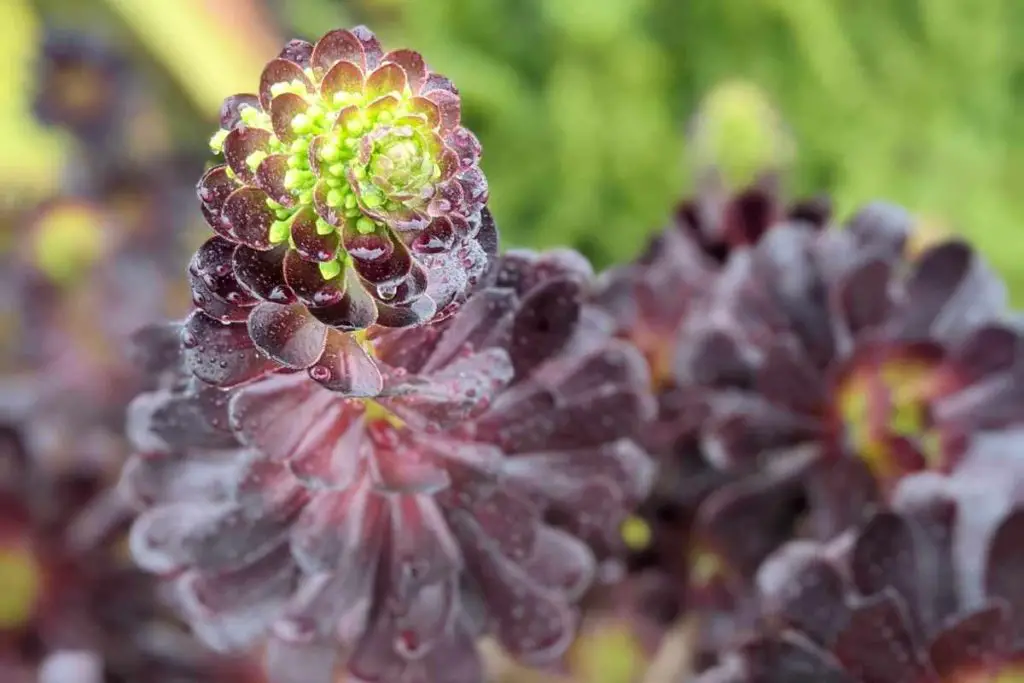
Maintain average indoor temperatures.
Most do best with temperatures of 65 to 80 F. Keep your plant away from cold drafts and vents that can lower the temperature. If your home is cool, use a space heater to provide warmth. Monitor your Aeonium for any signs of stress from temperature changes.
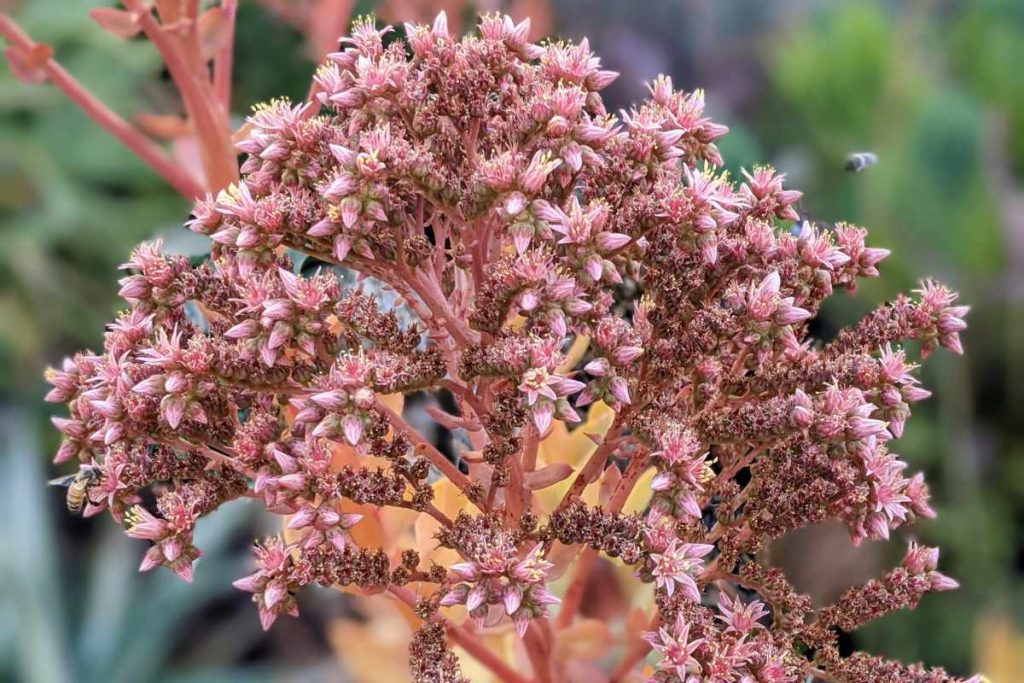
Increase humidity if needed.
If your home is dry in winter, use a humidifier to increase humidity for your Aeonium. You can also mist the leaves with a spray bottle or place the pot on top of pebbles with some water added. Higher humidity will help your plant adjust to the change in conditions. You most likely won’t ever need to do this unless you live in super dry desert conditions.
With time and attention, your Aeonium can adjust well to indoor conditions. Providing adequate light and adjusting the watering and humidity as needed will help reduce stress for your plant. Once established inside, they can thrive as a houseplant with the right conditions.
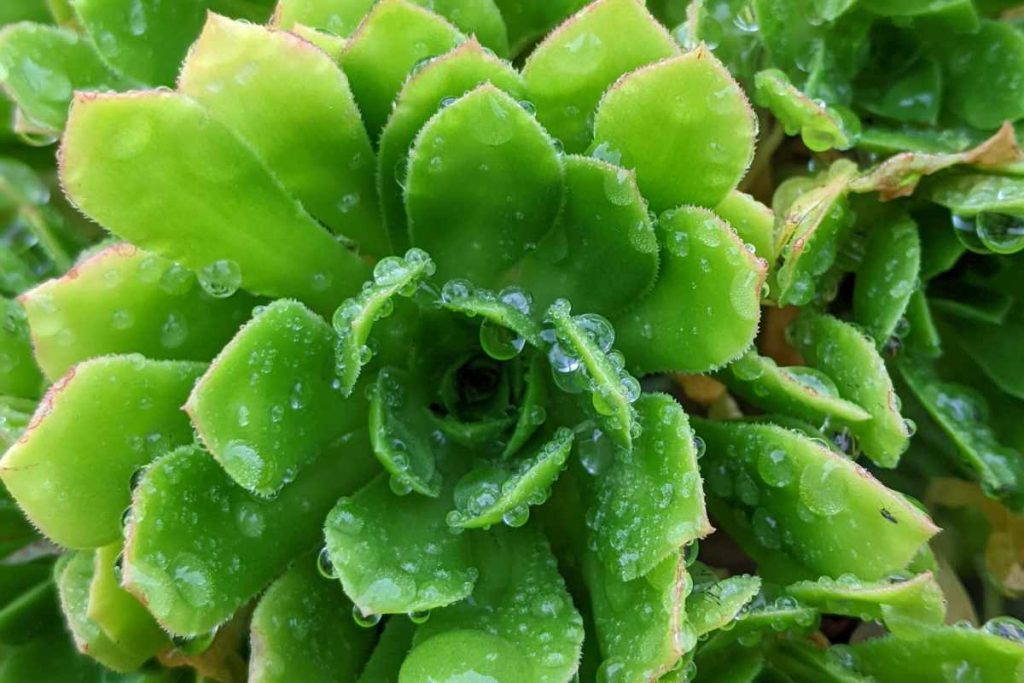
You might also like: Aeonium haworthii ‘Kiwi’: This Ridiculously Easy to Care for Succulent and 2 Ways to Propagate It
Aeoniums are a stunning and low-maintenance addition to any garden or home. By following the tips outlined in this guide, you can easily grow and care for these beautiful plants. With proper watering, sunlight, and care, your succulents will thrive and bring a touch of color and life to your garden space.
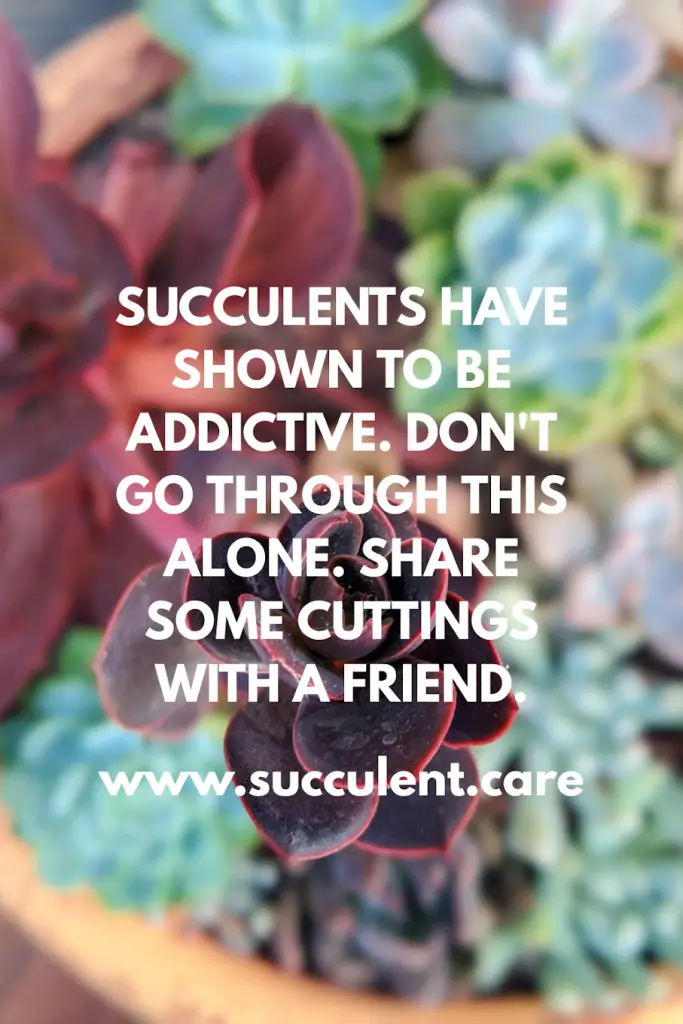
Where to Buy Succulents Online


